In recent years, Portugal has risen in popularity as one of the must-visit countries in Europe for its history and culture, delicious gastronomy, beautiful cities, incredible beach towns, beautiful hotels, and fabulous weather.
Not surprisingly, Lisbon and Porto are the most common destinations, especially for those short on time. However, there are so many beautiful places to visit in Portugal beyond the main cities. For quite a small country, Portugal packs a punch in the diversity of experiences, landscapes, gastronomic and cultural traditions from region to region.
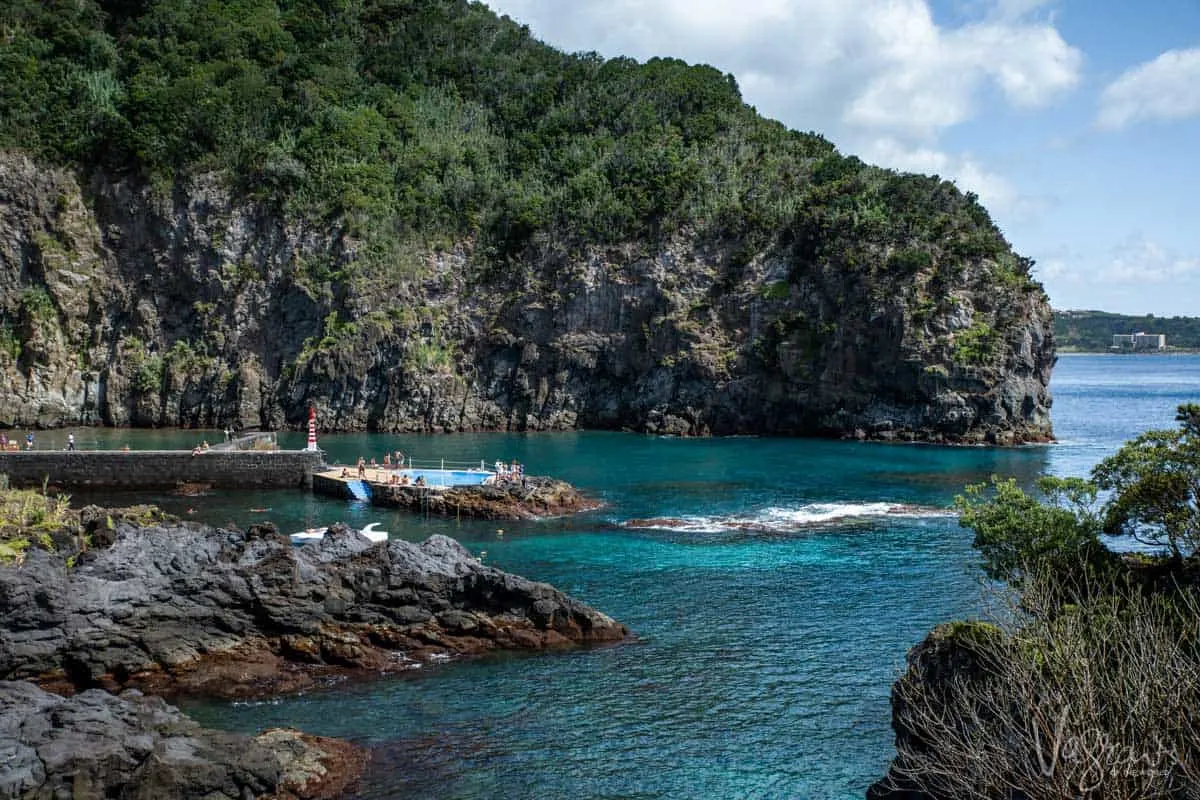
We have put together a list of the best places in Portugal we believe anyone with more than a week in this beautiful country should add to their Portugal itinerary.
Getting Around Portugal
Trains and Buses
Portugal’s cities are quite well connected by good train and bus services, so it is a very easy country to get around. Rede Express is the main coach service and a great way to travel around the country.
Trains are a great way to see Portugal and connect all of the major cities and most regions.
However, many of Portugal’s most beautiful and off the beaten track destinations can be difficult to reach by public transport.
Train Discount Tip:
If you book well in advance you can get train travel discounts of up to 40%. These early-bird discounts are applicable for train travel throughout Europe.
Example: A ticket from Lisbon to Porto – First class can be €37–€43 depending on the service. Tickets purchased in advance – usually a week or more out, range from €22–€27 for first class. Start looking on the website around two weeks out for the discounts to appear.
See the Comboios De Portugal site for timetables and prices.
Self Drive
A self-drive itinerary in Portugal is highly recommended. Portugal is very well connected with a good highway system which makes driving around the country very easy. Even the secondary country roads are in good condition and relatively stress-free.
Driving in Portugal is easy. The entire country is well connected by a good highway system, and even the secondary roads are usually in good condition so driving is relatively stress-free.
Some of the smaller country roads can be very narrow and may not be as well maintained, but driving is never challenging.
Car Rental in Portugal
Three-day car hire from Lisbon starts for as little as €50 for a small–midsize 4-door car which is perfect for getting around some of the smaller towns. Peak season (July and August) rates can be double that.
Tolls in Portugal can be quite expensive on certain roads, so this should be factored into your budget.
Search Discover Cars for the Best Car Rental Deals in Portgual with free cancellation and no hidden fees.
Day Tours (Base Yourself in the Cities and Take Day Tours)
If you don’t want to hire a car, Portugal is a small country, so many of the best places to visit can be done by day tours from the major cities. Tours don’t have to be expensive either and some tick off multiple highlights in one day trip. We will recommend tours we think are good value and make the most of your time.
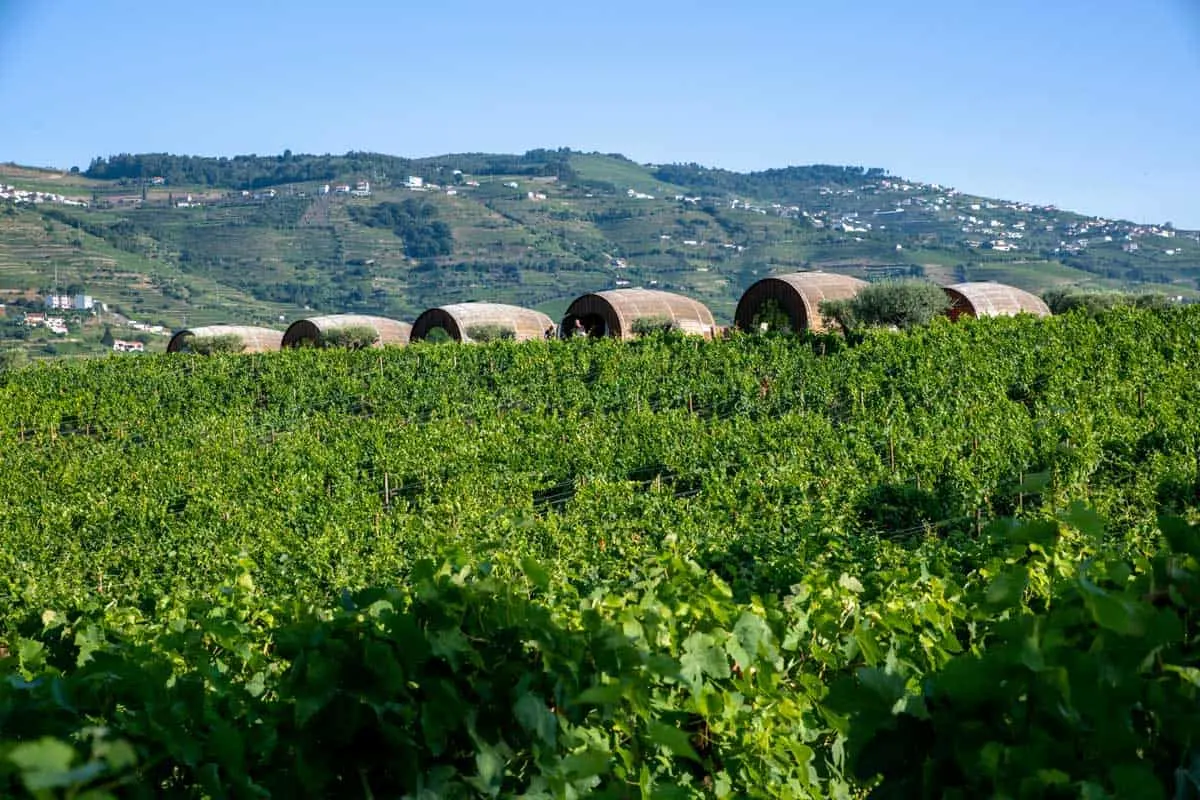
The Best Cities to Visit in Portugal
Lisbon
Lisbon is a great starting point because, as the capital city of Portugal, it is one of the most important cities. It is also where many people will arrive in the country. One of the most beautiful cities in Portugal with so many attractions, we recommend allowing plenty of time to explore Lisbon.
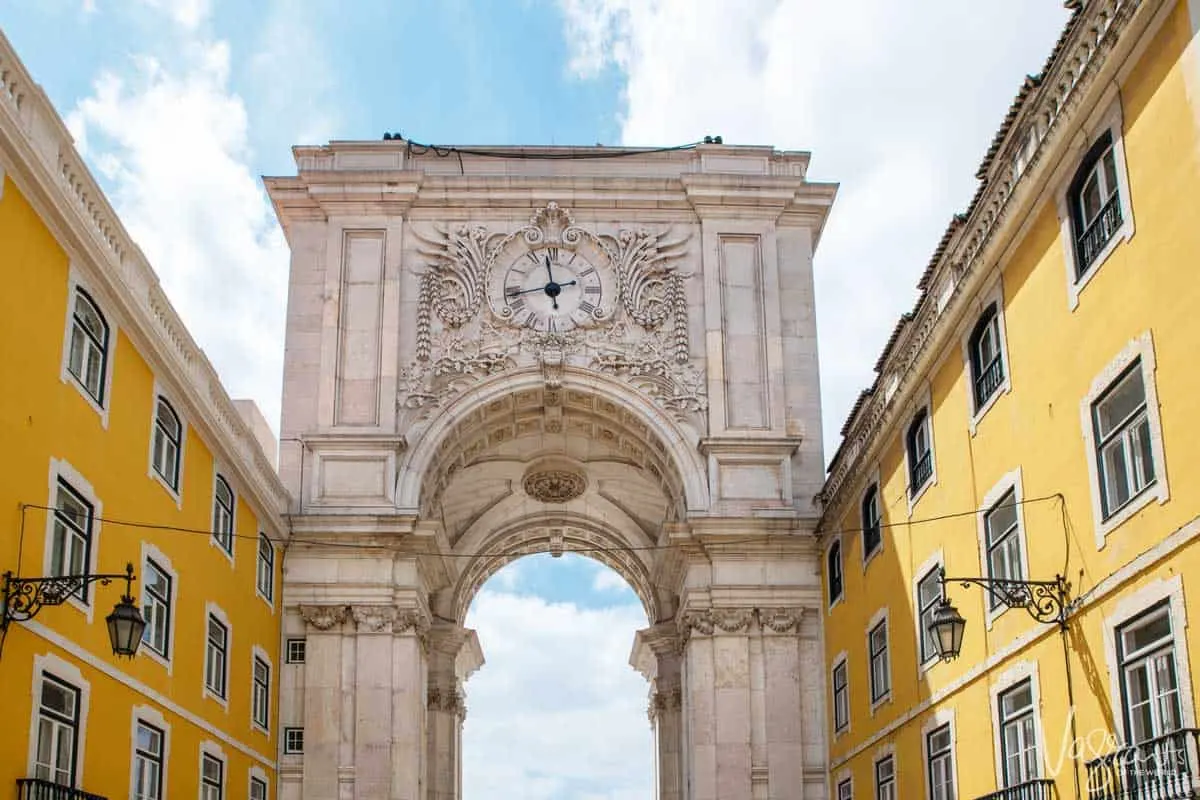
It was not that long ago Lisbon was often overlooked as a destination. Today, Lisbon has become one of the most popular cities to visit in Europe. Along with a staggering number of attractions, a vibrant nightlife and an exciting restaurant and arts scene, Lisbon boasts some of the best weather year-round than any other city in Europe.
While it is possible to enjoy a rewarding one day itinerary, there is so much to do in Lisbon, we recommend spending at least 2-3 days in Lisbon.
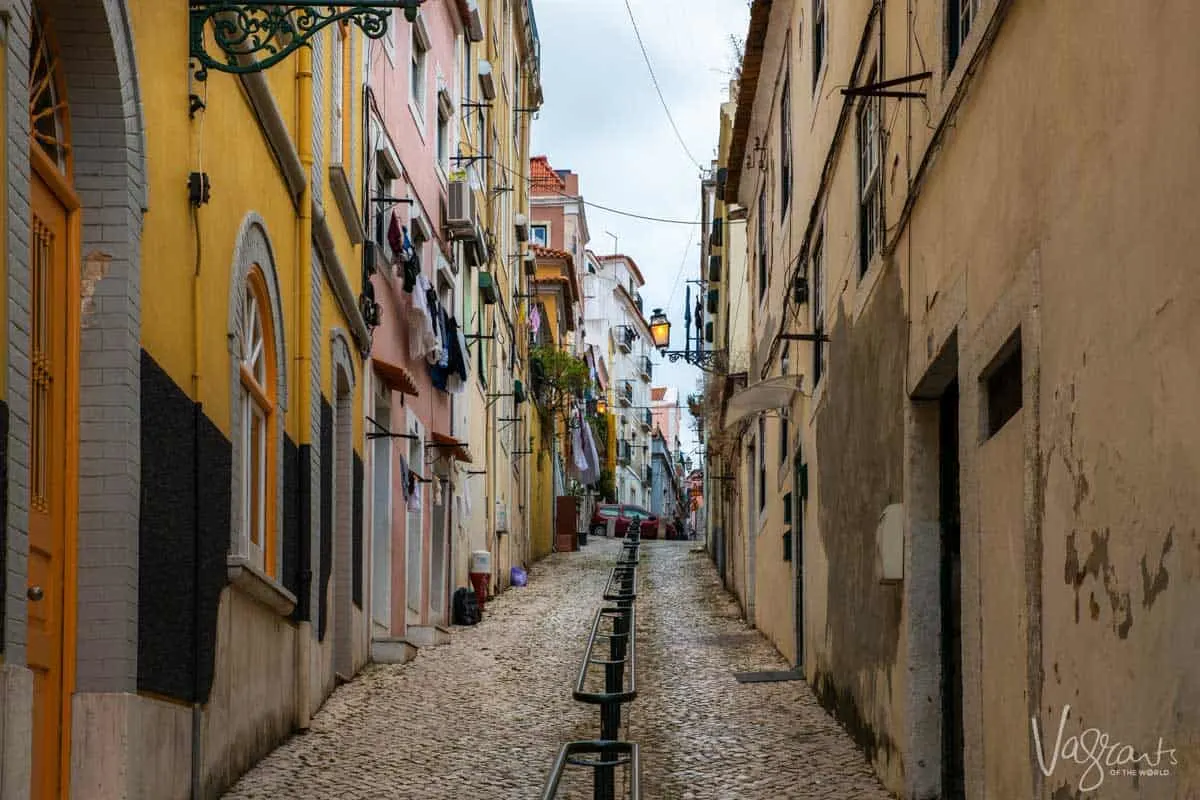
Visit the magnificent monuments and museums in Belém and the famous Pastéis de Belém bakery, home to the most guarded Pastel de Nata recipe (Portuguese custard tart) in the world. Lose yourself in the historic centre of Alfama, the heart and soul of Lisbon and the birthplace of Fado music. Bar hop in Barrio Alto or hang with the cool cats in Príncipe Real, where you’ll find hip bars, high end artisan shopping and great dining experiences.
Despite Lisbon’s newfound popularity, it is still a budget-friendly city to visit with a surprising number of free things to do in Lisbon that don’t leave you feeling like you missed out.
Recommended to Make the Most of Your Time in Lisbon
Lisbon Card: Save money and time with a Lisboa Card for free and discounted entry to Lisbon’s best attractions as well as unlimited free access to the public transport system. Available in 24, 48, or 72 hours. See here for full card details.
Hop On Hop Off Bus – Don’t want to navigate public transport? See Lisbon at your own pace with the freedom of the hop on hop off bus service. Starting from €19 pp, the bus takes you around the best sights in Lisbon with an audio guide and discounts to major attractions. It is valid for 24 or 48 hours. See here for full details.
Alfama and Lisbon Cathedral Guided Walking Tour: Get your bearings in Lisbon’s oldest neighbourhood and visit some of the cities most iconic sites on a 3-hour walking tour. A walking tour is a great way to start your time in a city before heading off on your own. Tours start at €24. See here for full tour details.
Porto
Porto, (Actually O Porto) is the second-largest city in Portugal and is renowned as the city where port wine originated. Built on hills along the Douro River, Porto rises from the banks of the iconic river as one of the prettiest cities in Portugal. Not as big as Lisbon, but by no means less attractive; there is so much to do in Porto.
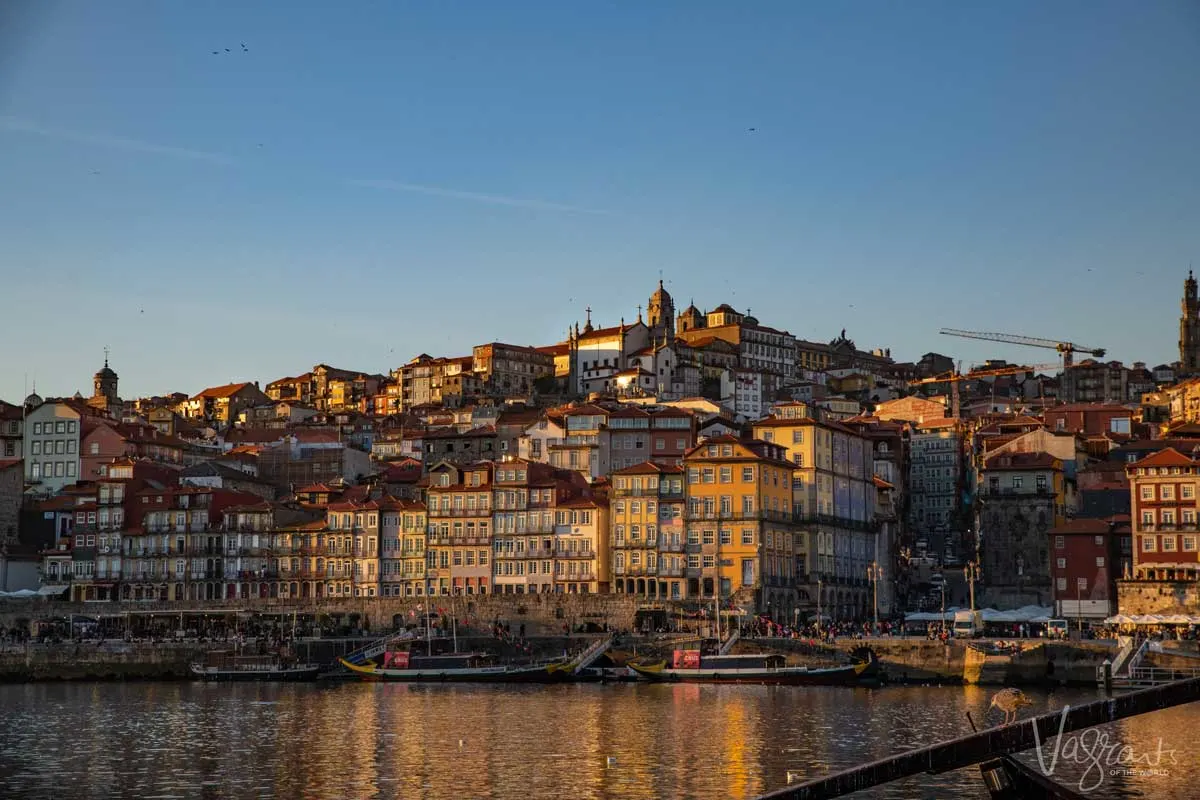
The City of Bridges (for a small city, Porto boasts six bridges) Porto is an exciting mix of monumental grandeur and historic grit. It’s a little edgy and progressively contemporary, but above all, the city is all class. Whether enjoying a tasting at the Port wine cellars in Vila Nova de Gaia or exploring the contrasts of the medieval tangle of Ribeira and cutting edge architecture, art and gastronomy, Porto leaves a mark on all her visitors.
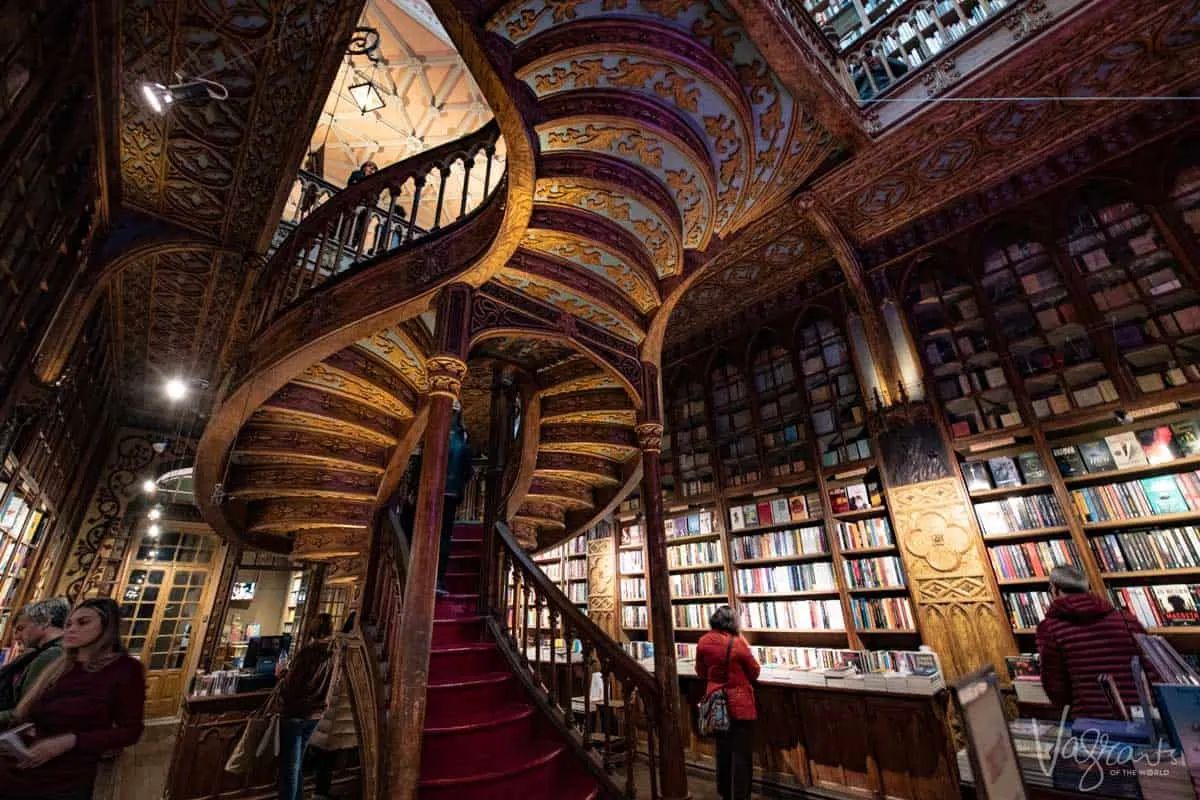
From the Clerigos Tower, an ancient octagonal tower, to the famous Livraria Lello bookshop, Porto has loads of attractions and, much like Lisbon, is quite a budget-friendly city.
Plan to spend at least two days in Porto, but you can easily fill many more exploring the city and surrounding areas.
Recommended to Make the Most of Your Time in Porto
Hop-On Hop-Off Bus, River Cruise, & Port Cellar Tour: Get around Porto with ease with a 2-day combo ticket for unlimited access to the hop on hop off bus, a 1 hour Douro River cruise and tour of the famous Calém Port Wine cellars. See here for full combo ticket details.
Porto Card: Save money with a Porto Card with 150 discounts, including free access to 6 museums and 50% off on a visit to a port wine cellar. You also have unlimited free use of the public transport system. Cards are valid for 1-4 days. See here for details.
Coimbra
Head to Central Portugal to discover one of Portugals most overlooked cities, Coimbra. Conveniently located on the train line between Lisbon and Porto, there’s no excuse not to stop in Coimbra for a day or two. Once the capital of Portugal, Coimbra is home to one of the oldest, continually operating universities in Europe. The UNESCO World Heritage site dates back to the late 13th century.
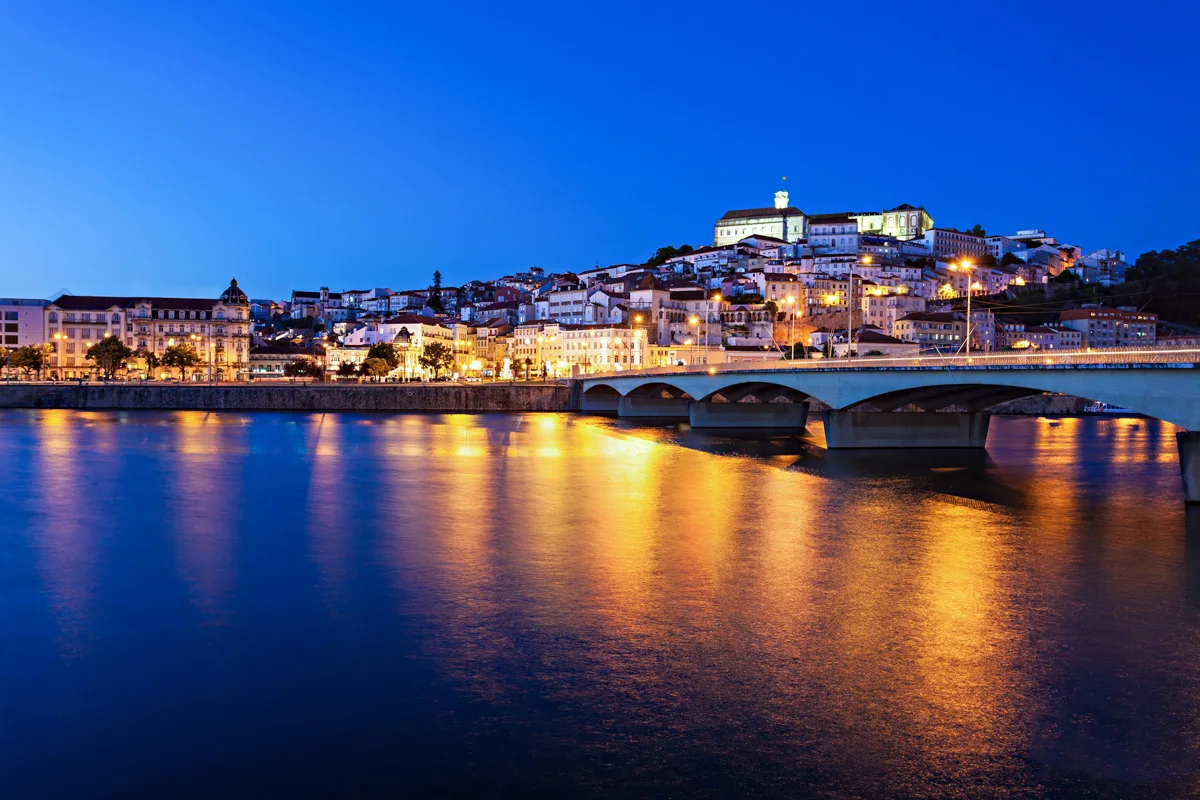
With a big city vibe but the ease of a large town, Coimbra is a joy to explore. Visit the University and Coimbra’s greatest claim to fame – Biblioteca Joanina. The stunning Baroque style library has made it on the most beautiful libraries in the world list more than once.
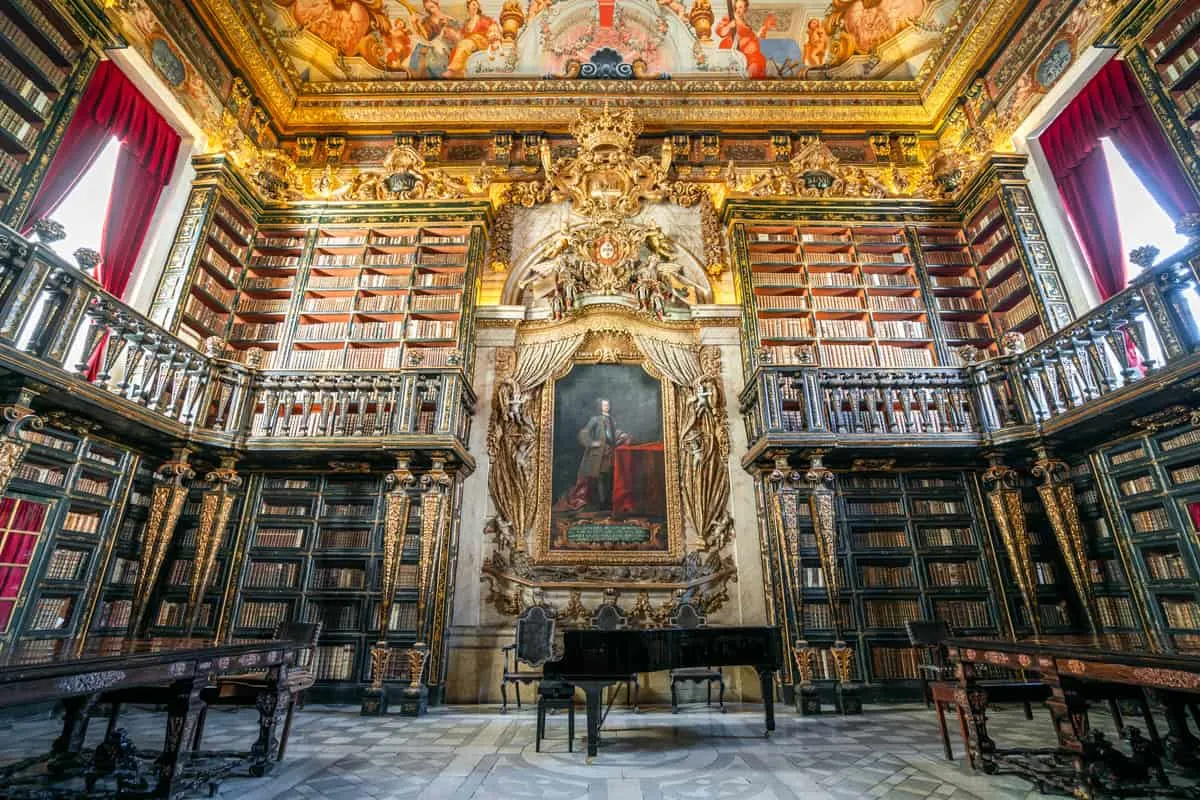
Set on the Mondego River, Coimbra is a charming city and a treasure trove of historic sites, parks and gardens. You’ll also find a vibrant cultural scene and many interesting academic festivals throughout the year, including the Tin Can Parade and the eight-day Burning of the Ribbons party.
Coimbra Combined Day Trip Recommendation from Porto
Fátima and Coimbra Full-Day Tour from Porto: Visit one of Portugal’s most important pilgrimage sites, the Shrine of Fátima, with the option to attend a mass at the sanctuary. Then take a tour of the historic city of Coimbra. Tour includes guide, lunch, all entry fees and transport to and from Porto. See here for full details.
Braga
Portugal’s fourth-largest city and capital city of the northern Minho region is a unique mix of almost overwhelming history and a youthful, modern vibe. It’s not surprising Braga was voted Europe’s best destination for 2021.
Much like Coimbra, Braga has a big city vibe but the ease of a large town. There are loads of great cafe’s, restaurants and bars and plenty of good shopping.
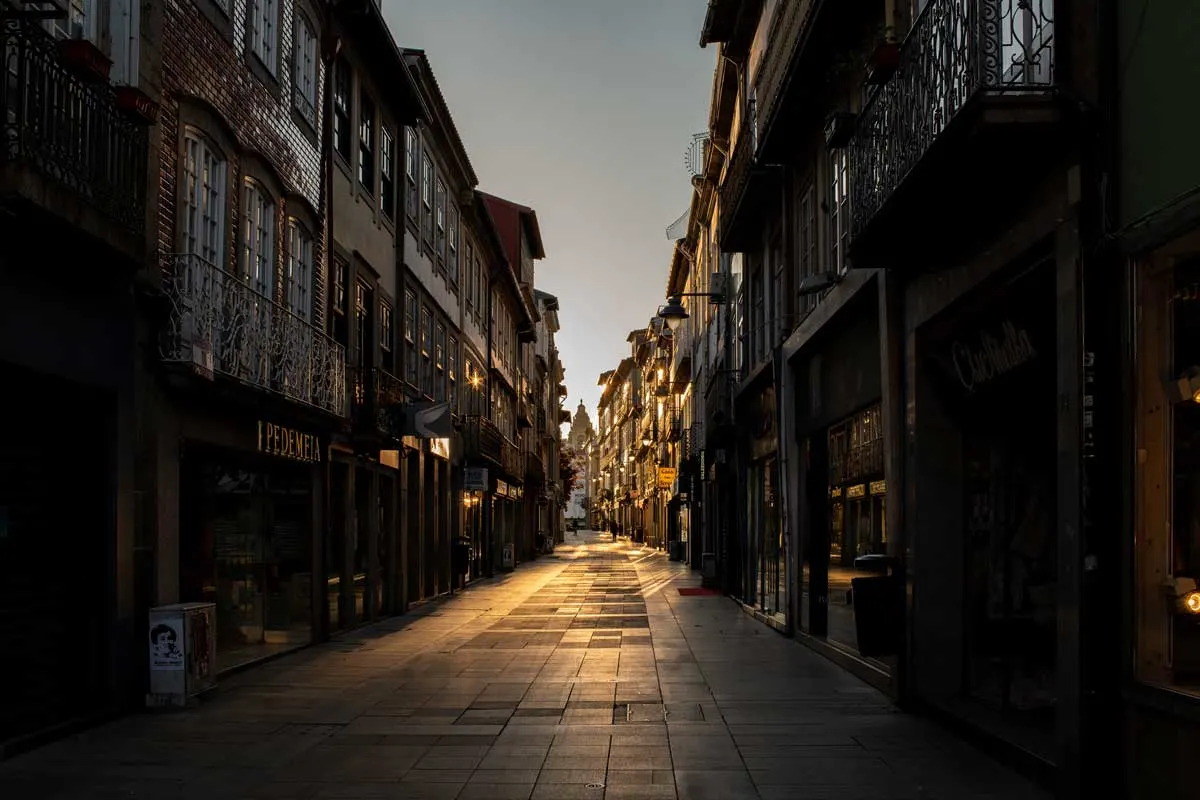
Two of the cities most prominent attractions are the Braga Cathedral, the oldest in Portugal. Aside from the incredible gothic interior, the cathedral houses a few intriguing surprises, including the mummified corpse of Archbishop Dom Lourenco Vicente, who died in 1398.
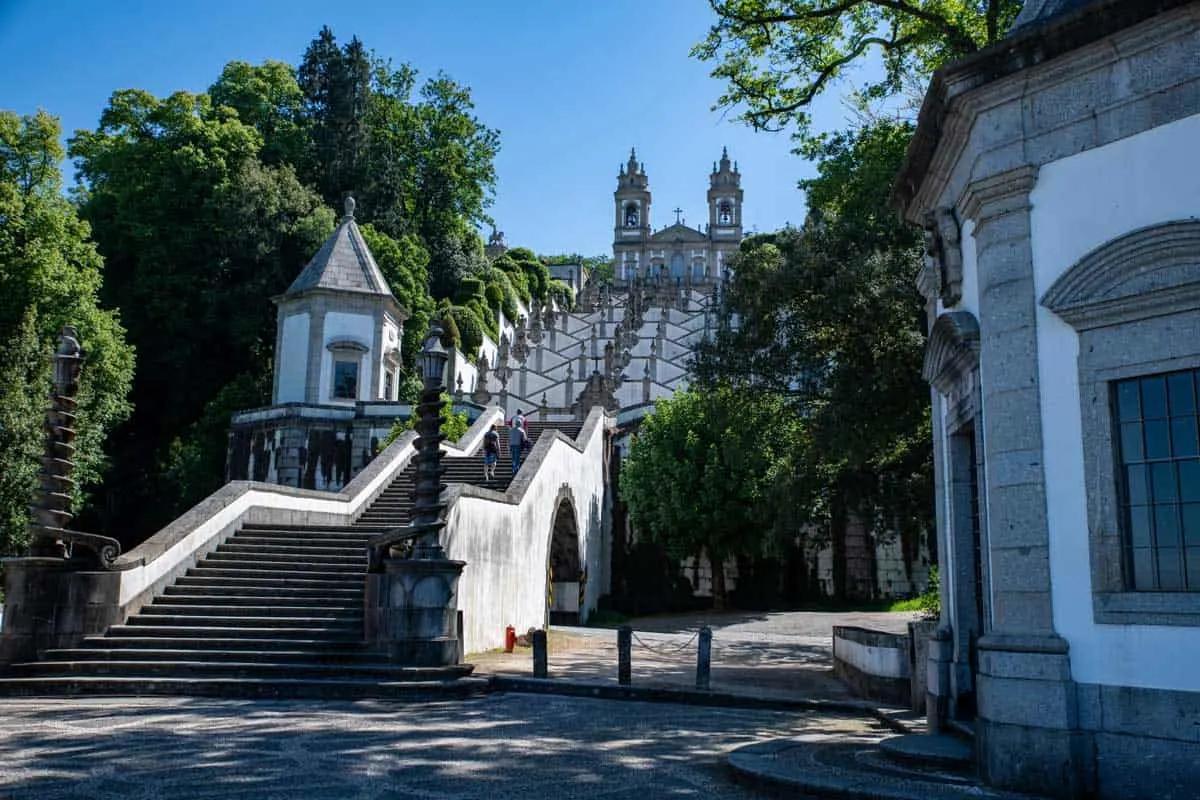
Also, don’t miss the Bom Jesus do Monte Basilica on the outskirts of the city. The sanctuary is an important Christian pilgrimage site and tourist attraction. The site’s most notable feature is the monumental, Baroque stairway that zig zags through different segments, with a fountain at each representing the five senses. With close to 580 steps, the staircase climbs 116 meters (381 feet). If you don’t think you can manage the climb, you can take the funicular tram to the top.
Recommended Day Trips and Braga Tours
Braga and Guimarães Full Day from Porto with Lunch: Take a day trip from Porto to the cities of Guimarães and Braga. Travel through the beautiful Minho region to visit the historical centres and most important sights of the two cities and enjoy a traditional lunch at a local restaurant. Tour includes transport, guides, entry fees and lunch. See full tour details here.
Half-Day Braga City Tour from Porto: See the best sights in Braga on a half-day tour from Porto. Visit the Braga cathedral, the famous Bom Jesus do Monte Sanctuary and experience the best of the historic centre. Tour includes transport, entry fees, guides, hotel pick up and ride in the water-powered funicular. See full tour details here.
Évora
Évora, the capital of Portugal’s Alentejo region, is renowned for cork plantations, magnificent produce and world-renowned wine. Évora’s most famous attractions within the walled city, aside from the prominent cathedral, are the beautifully preserved Roman Temple and the eerie Capela dos Ossos (Chapel of Bones).
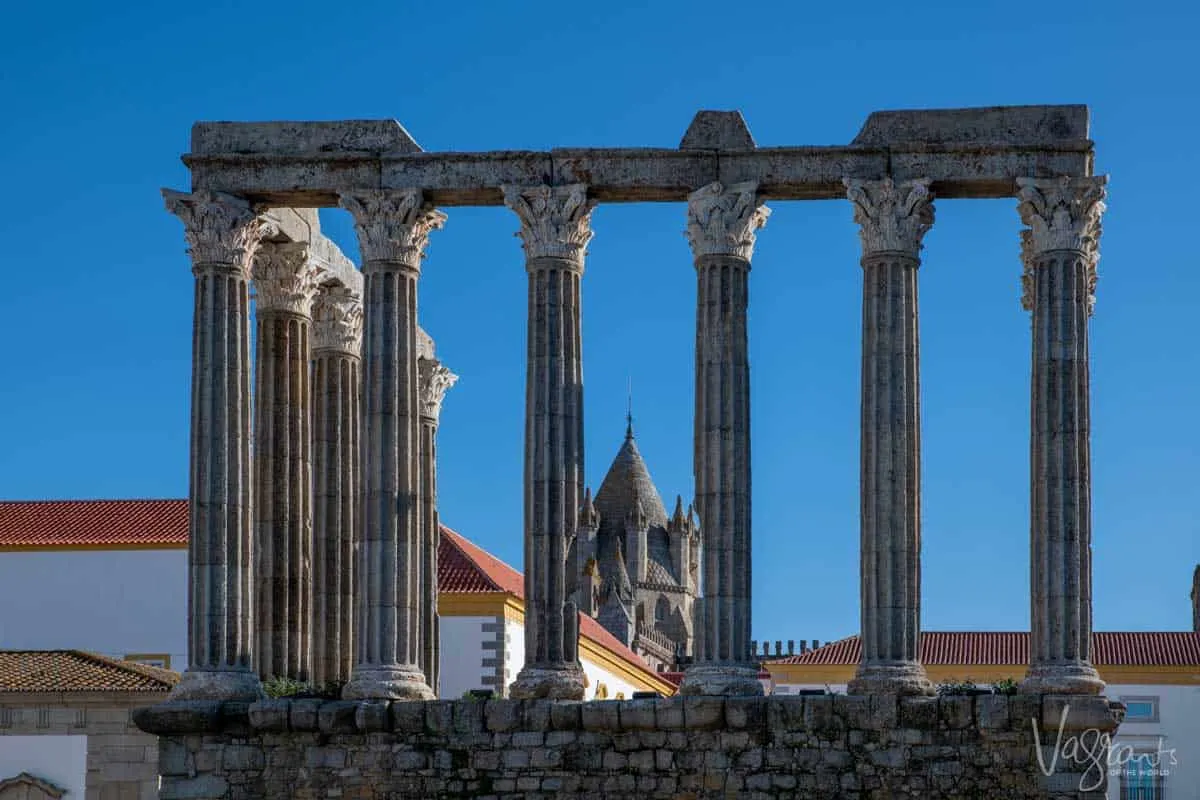
Quaint cobblestone streets reveal an astounding array of excellent restaurants as well as loads of interesting historic sites, galleries and shops. There is a lot to do in Evora, but it is also a great base for exploring the wider Alentejo region. We give you a four day Alentejo self-drive itinerary here, starting in Évora.
Recommended Évora Day Trips and Tours
Full-Day Évora City & Wine Tour From Lisbon: Travel through the stunning Alentejo landscape of olive and cork trees on a day trip to Évora. Visit all the city’s top sites including the Chapel of Bones, the University and Évora Cathedral finishing the day with a wine tasting at Herdade do Esporão, one of Portugals most important wineries. Tour includes all transport, guides, entry fees to all sites and wine tasting. See here for tour details.
Exclusive Cartuxa Wine Lovers Tour: For an amazing city tour with a difference, you will discover the heritage of the famous Alentejo wine region on a day trip travelling in your own personal electric car. This tour has so many exclusive inclusions including premium wine and olive oil tastings at various locations, electric car rental, a bottle of famous Cartuxa Red wine to take home, wifi to live stream your day on social media and a recording to take home, and so much more. See here for full tour details.
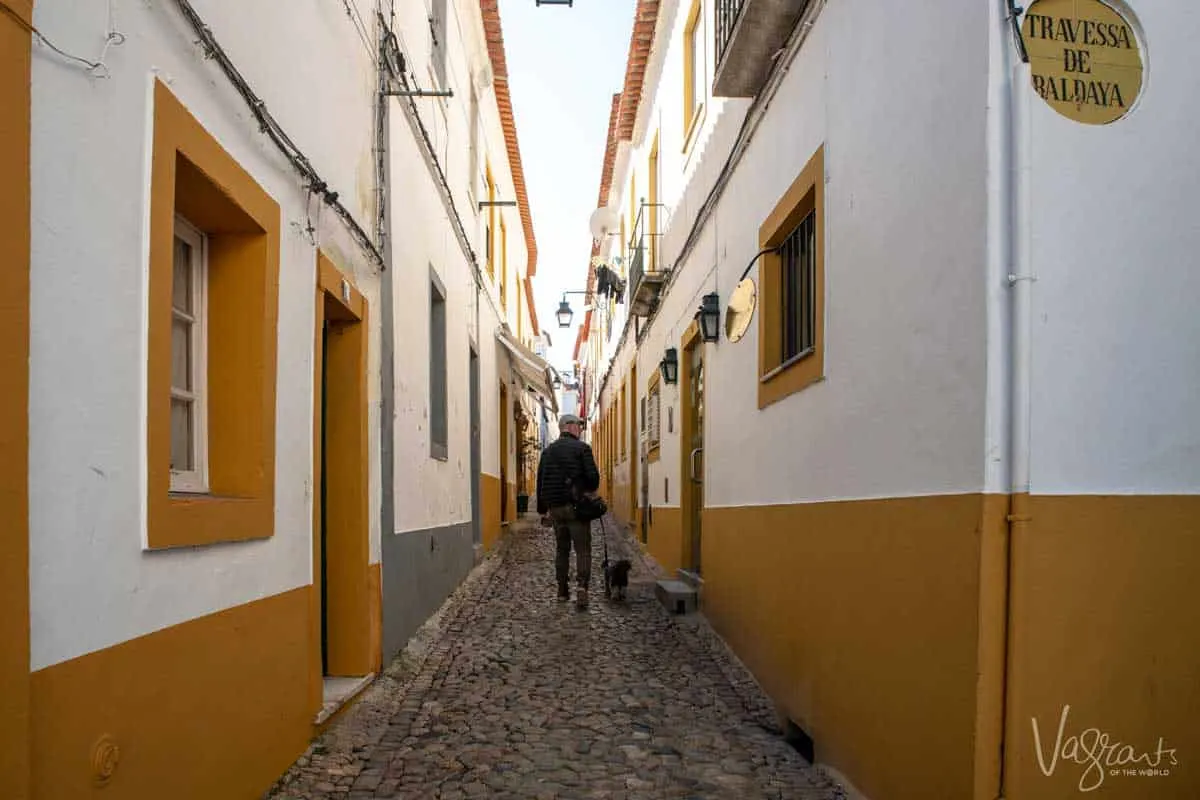
Lagos
One of the premier resort towns in the western Algarve region – the most southwestern region of the Iberian Penninsula, Lagos is famed for its stunning coast, sea caves and beaches.
A walk along the Ponta da Piedade showcases the regions famous golden cliffs and picture-postcard sea caves, one of the most iconic and familiar Portuguese coastal scenes.
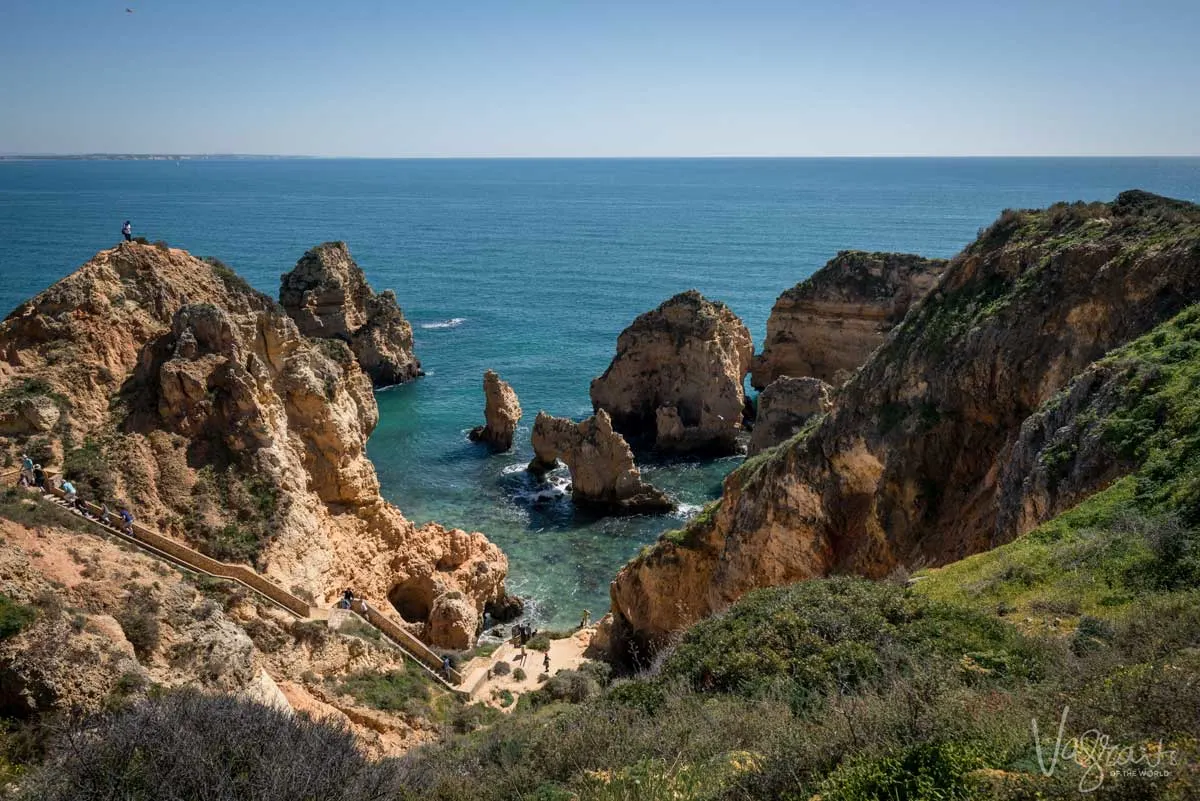
Recommended Lagos Tour
Benagil Caves Boat Cruise: Take a cruise along the Algarve Coast from Lagos to visit the famous Benagil caves, the largest sea cave in the region, only accessible by boat. See here for cruise details.
However, set behind the picturesque caramel cliffs, you will find a lively tourist town and a charming old town that, much like Faro, has, for the most part, withstood the tide of tourism.
Explore the narrow maze of streets with typical cobbled calçadas, the mosaic cobblestone footpaths unique to Portugal. Typical 18th-century Portuguese houses, Baroque churches and the medieval Lagos Castle rub shoulders with cafe’s, restaurants and bars which keep the old town alive.
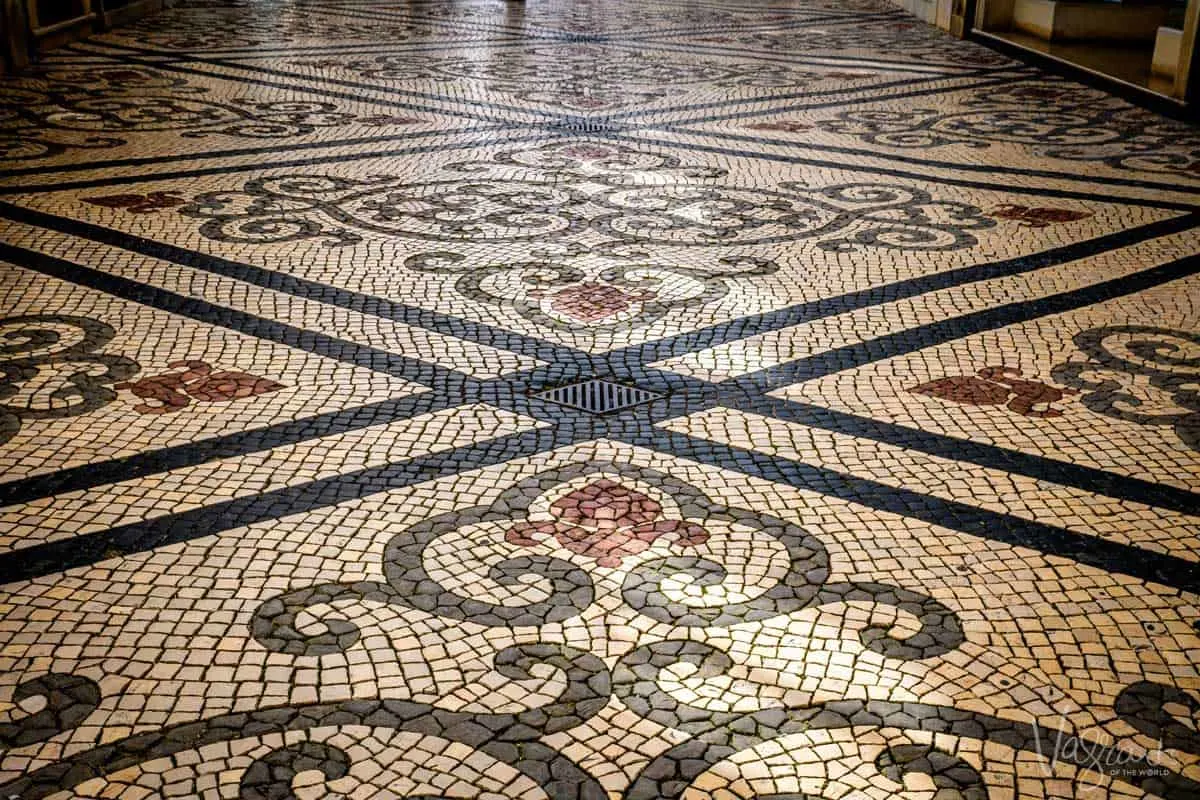
Faro
The largest city in the Algarve, many see Faro as merely a transport hub thanks to its international airport. Also, the non-descript urban sprawl, tourist developments and shopping malls make a first impression that Faro’s charm has faded. However, go beyond Faro’s urban practicality, and you’ll still find a city oozing classic Portuguese charm with plenty of historical and natural attractions.
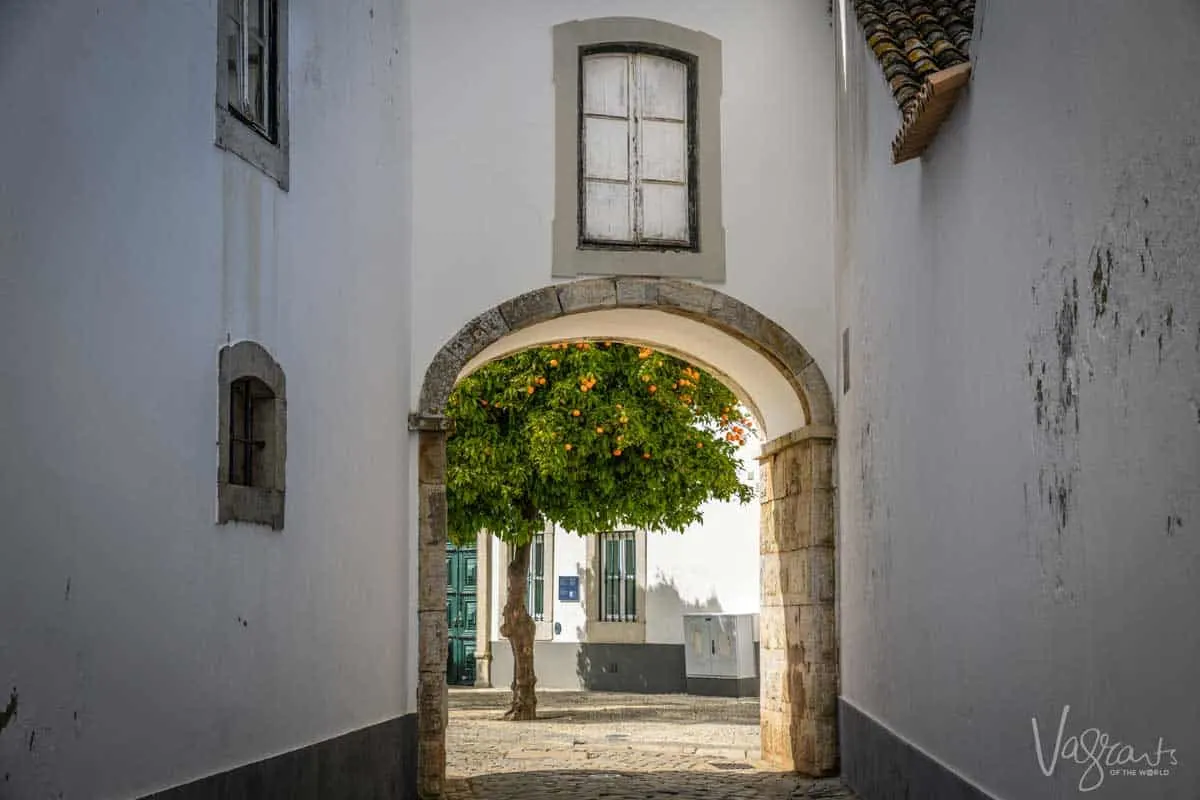
Faro’s old town, partially surrounded by the 16th-century Roman walls, is loaded with fantastic historical sites. The 13th-century cathedral boasts a magnificent baroque interior with an impressive display of traditional Azulejos tiles. Climb to the top of the tower for sweeping views over the Parque Natural da Ria Formosa.
Visit the Igreja do Carmo, where much like in Évora, you will find a Capela dos Ossos, a chapel lined with over 1200 skeletons, the bones of the Carmelite monks exhumed to make room in the local cemetery.
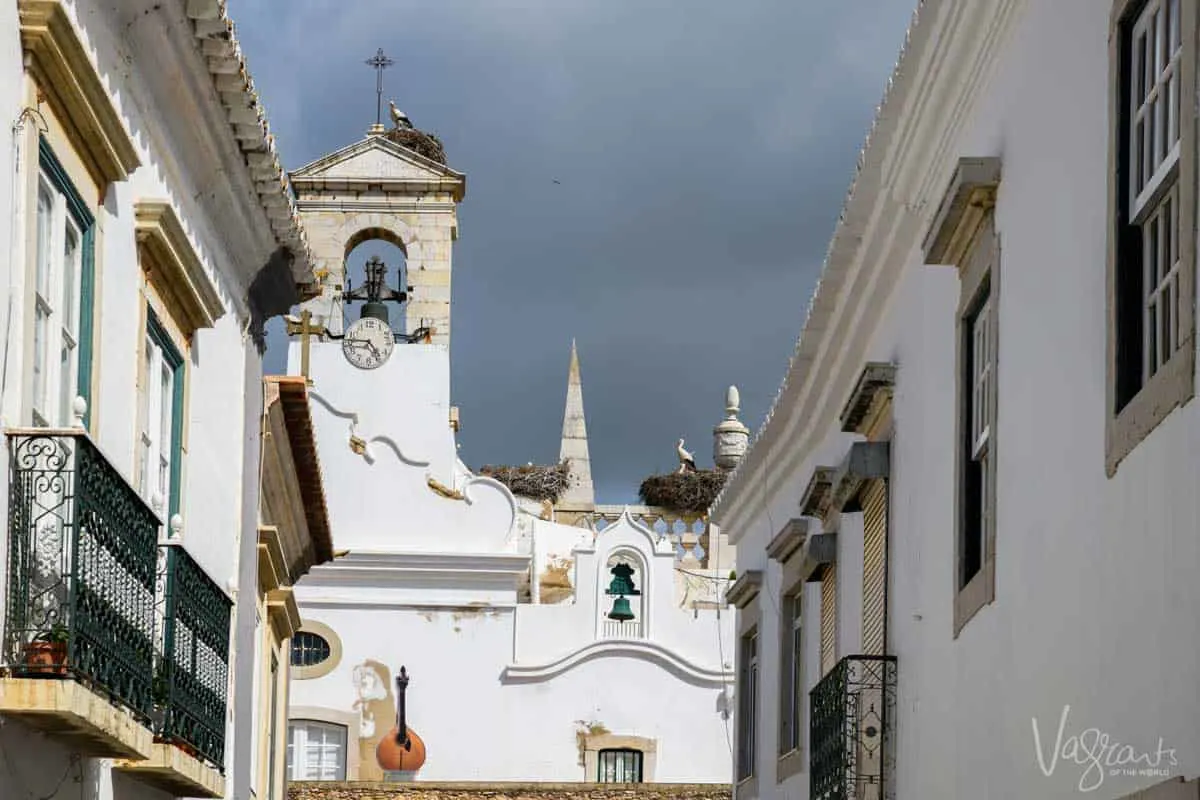
You’ll also find plenty of great restaurants, cafe’s and bars in Faro, both next to and away from the sea.
The Parque Natural da Ria Formosa boasts beautiful beaches and islets the Algarve is famous for and many opportunities to spot wading birds like flamingoes.
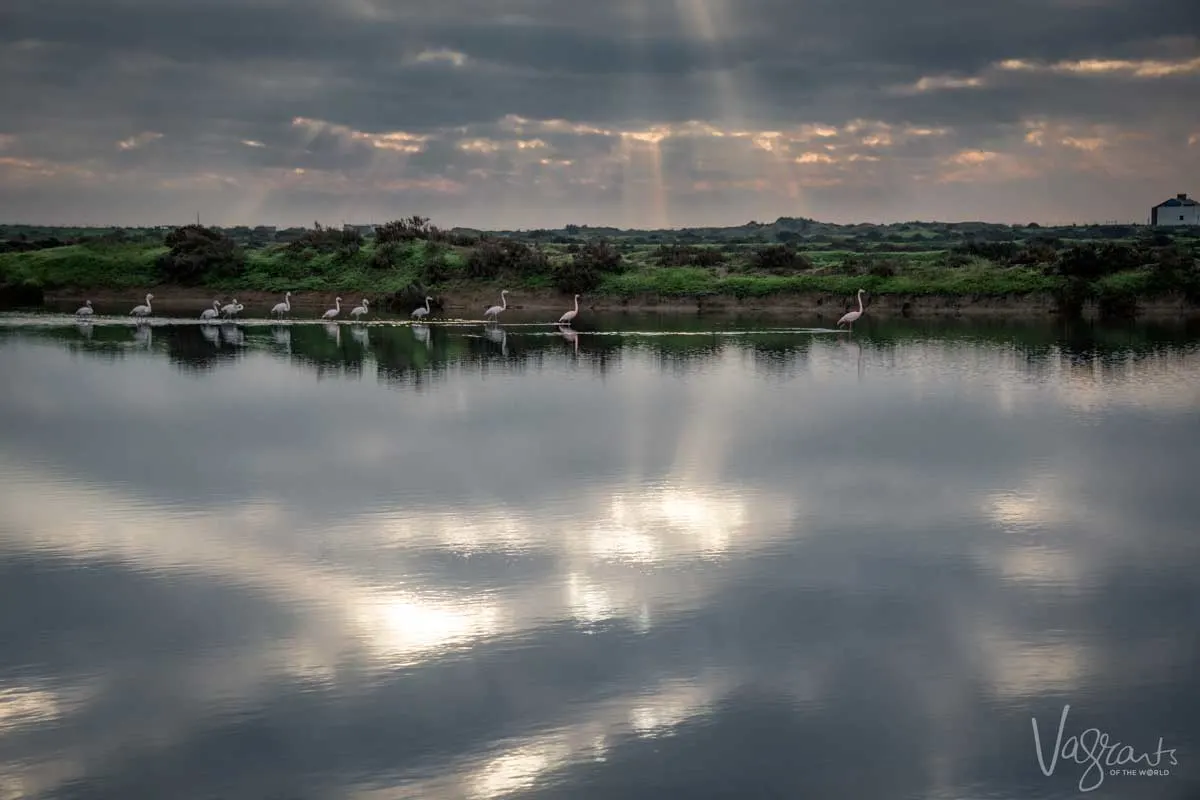
Tavira
Head further along the south coast towards the Spanish border to the eastern Algarve and one of the prettiest towns in the Algarve. The Rio Gilão weaves its way through the small city, the two sides of the old town joined by the old Roman Bridge.
Tavira offers a less tourist dense experience than some of the other Algarve cities, often described as one of the prettiest and most laid back destinations in the Algarve.
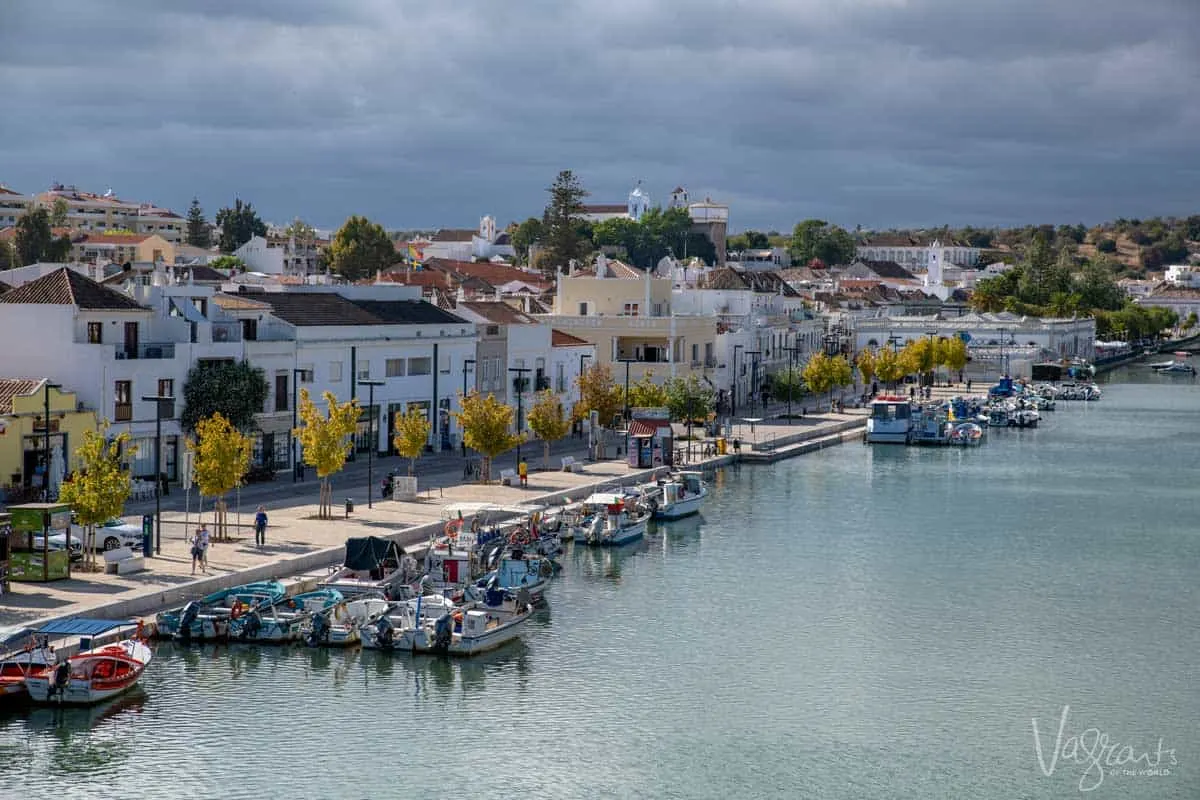
Elegant streets lined with cafe’s, restaurants and boutiques weave away from the river bank overseen by the Moorish castle ruins on the hill, and the 13th century Igreja de Santa Maria do Castelo church. The church houses intricate Azulejo panels and the tombs of seven knights who fell to the Moors during the conquering of Tavira.
From the castle walls, you have views over the riverside town and the Ria Formosa Natural Park. Take the small ferry from the centre of town to the Isla de Tavira, where you will find stretches of pristine beaches.
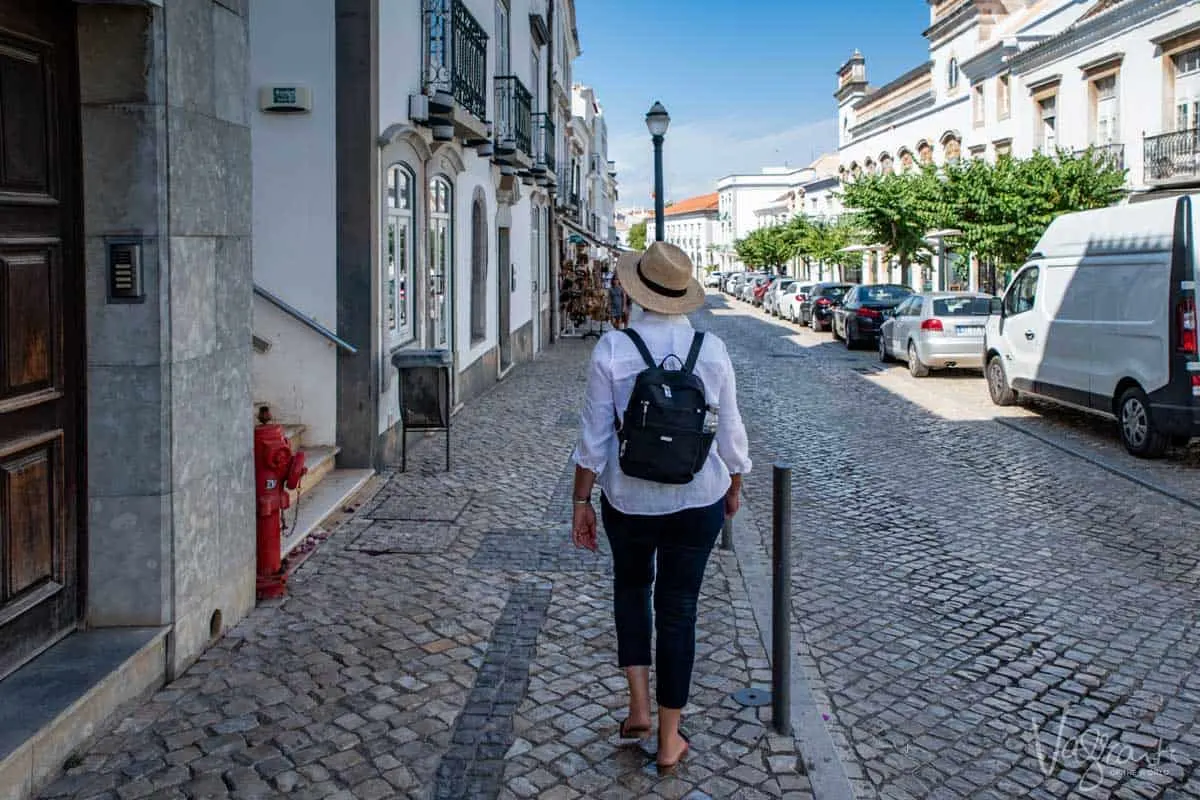
The Most Beautiful Places in Portugal
Not all of Portugal’s beautiful destinations are city-centric. Some of the most beautiful places in Portugal include many magnificent stretches of the natural landscape, country regions and striking hilltop villages that spill from ancient castles.
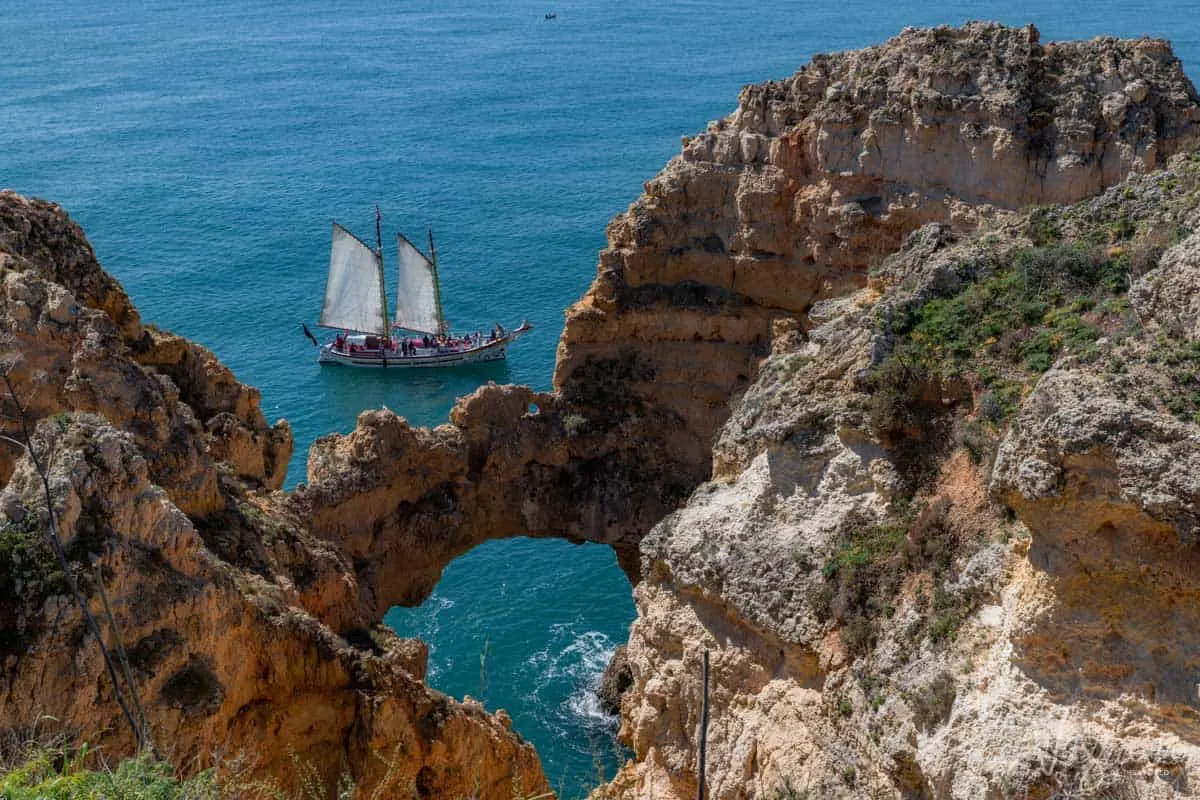
Sintra
Sintra, famous for its incredible must-see castles, many compare to fantastical locations from movies – The Palácio Nacional de Sintra, a beautifully preserved medieval royal palace favoured by Portuguese nobility. Palácio Nacional da Pena – Pena Palace, the whimsical postcard-worthy castle painted in vibrant colours, rises out from lush green forests. And not to be missed, the 10th century Castle of the Moors which offers impressive views from its lofty perch over Sintra.
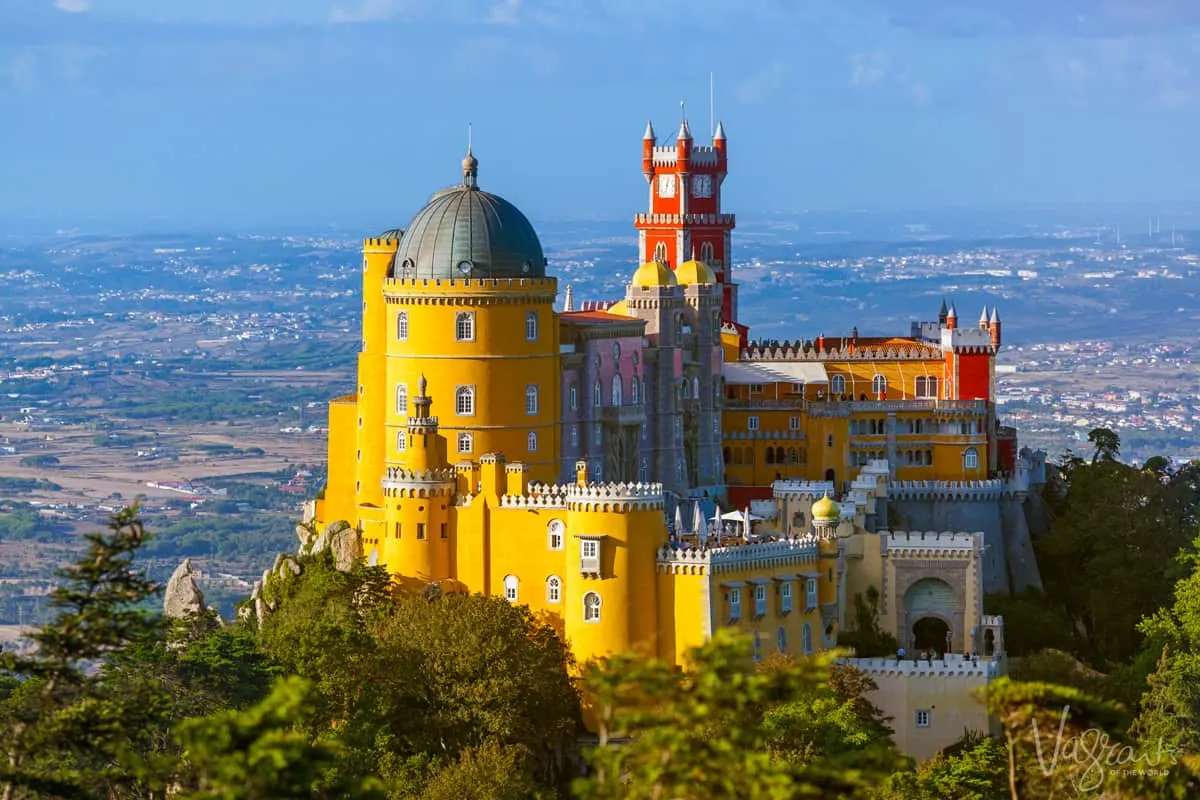
One of the most popular day trips from Lisbon, Sintra, is not just about fairytale castles. The region is blessed with some of the most magnificent coastlines, including Europe’s most western point, historic parks and gardens, quaint towns and stunning natural areas. While you can see Sintra’s highlights on a day trip from Lisbon, it’s well worth the time if you have a few days. See our complete guide for a day trip to Sintra from Lisbon if you only have one day.
Recommended Sintra Day Trip From Lisbon
Pena Palace, Sintra, Cabo da Roca, & Cascais Daytrip: Tick off some of the best things to see around Lisbon on a small-group day trip. Start the day at Pena Palace in Sintra for a guided tour and skip the line entry. Then, visit the awe-inspiring cliffs of Cabo da Roca, and finish the day in the classy seaside town of Cascais. Tour includes all transportation, guides, entry and hotel pick up. See here for full tour details.
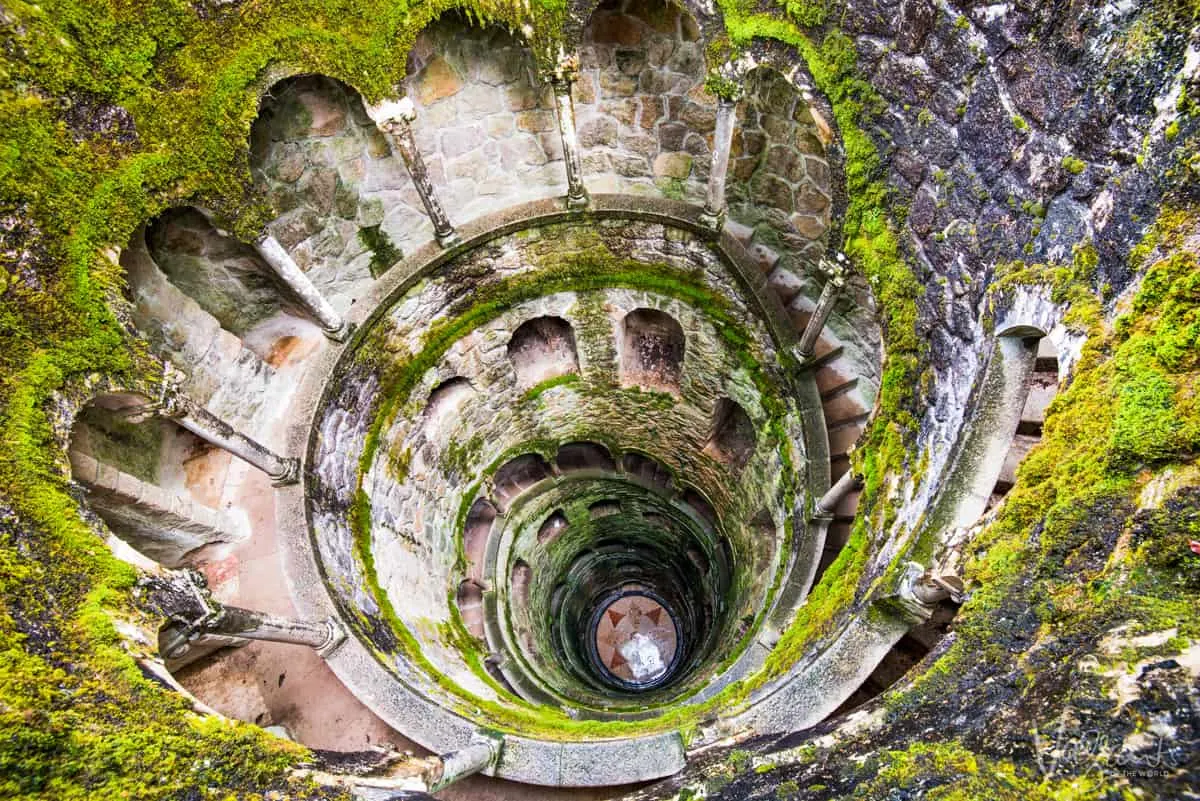
The Douro Valley
A premier wine region (the other is the Alentejo), the Douro, a UNESCO World Heritage Site, is not just for wine lovers. One of the oldest wine regions in the world, vineyards cascade down the hillsides into the Douro, creating one of the most beautiful landscapes in the world. It is no wonder it is one of the most beautiful places in Europe to visit in the fall.
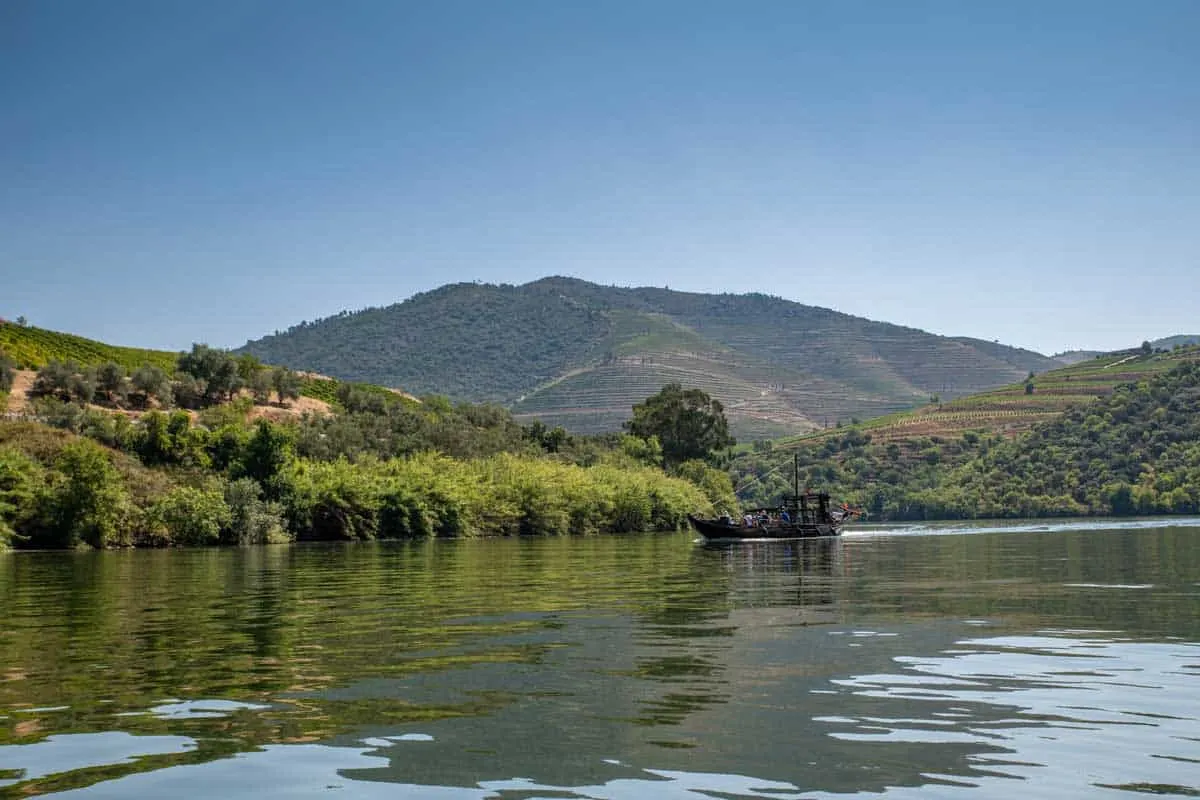
Stay at any number of beautiful wine estates; at one, you can even stay in a wine barrel. Sample some of the most exquisite wines in the world and local gastronomy to match. Take a cruise down the Duro in a traditional Rabelo boat, the vessels used to transport the wine from the farms to the cellars in O Porto.
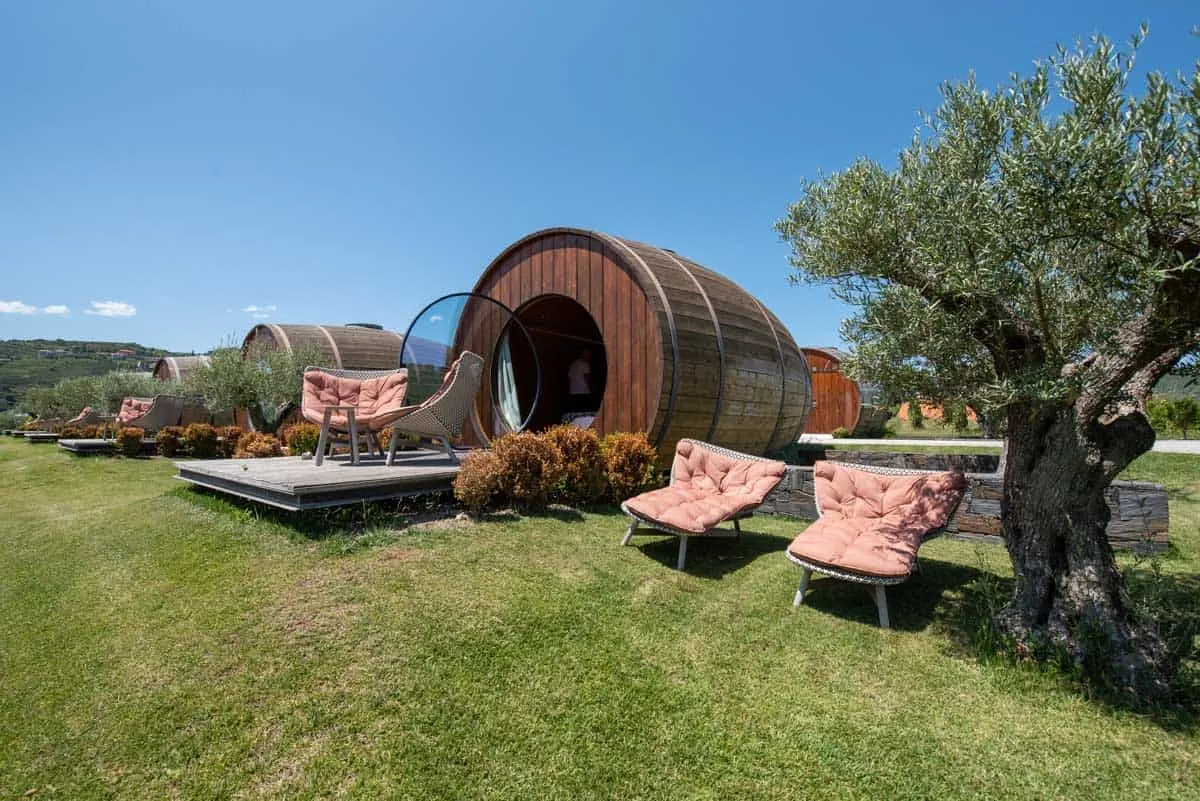
Check Rates for the Wine Barrel rooms at The Wine House Hotel – Quinta da Pacheca
A popular day trip from Porto, you can explore the Douro region by car or, if you prefer not to tackle the steep and winding roads, take the Linha do Douro train, one of the prettiest train journeys in Europe, travelling from Porto.
Douro Day Trip from Porto Tour Recommendation
Douro Valley Tour with Wine Tasting, Cruise and Lunch: Take a full-day trip from Porto (either small group or private) to experience the best of the Douro region. Visit two wineries for tastings, enjoying a typical Portuguese lunch and a boat cruise down the Douro. The tour includes transport, lunch, tastings, guides and cruise. See here for full tour details.
The Azores
The Azores, an archipelago of nine islands, is an unspoiled paradise in the middle of the Atlantic Ocean and one of the most beautiful places to visit in Portugal. Clustered into three island groups – São Miguel, the group’s largest island, Santa Maria, and the Formigas Reef to the east. Flores and Corvo, to the west and Graciosa, Terceira, São Jorge, Pico, and Faial in the centre. There is so much to explore on this stunning island archipelago.
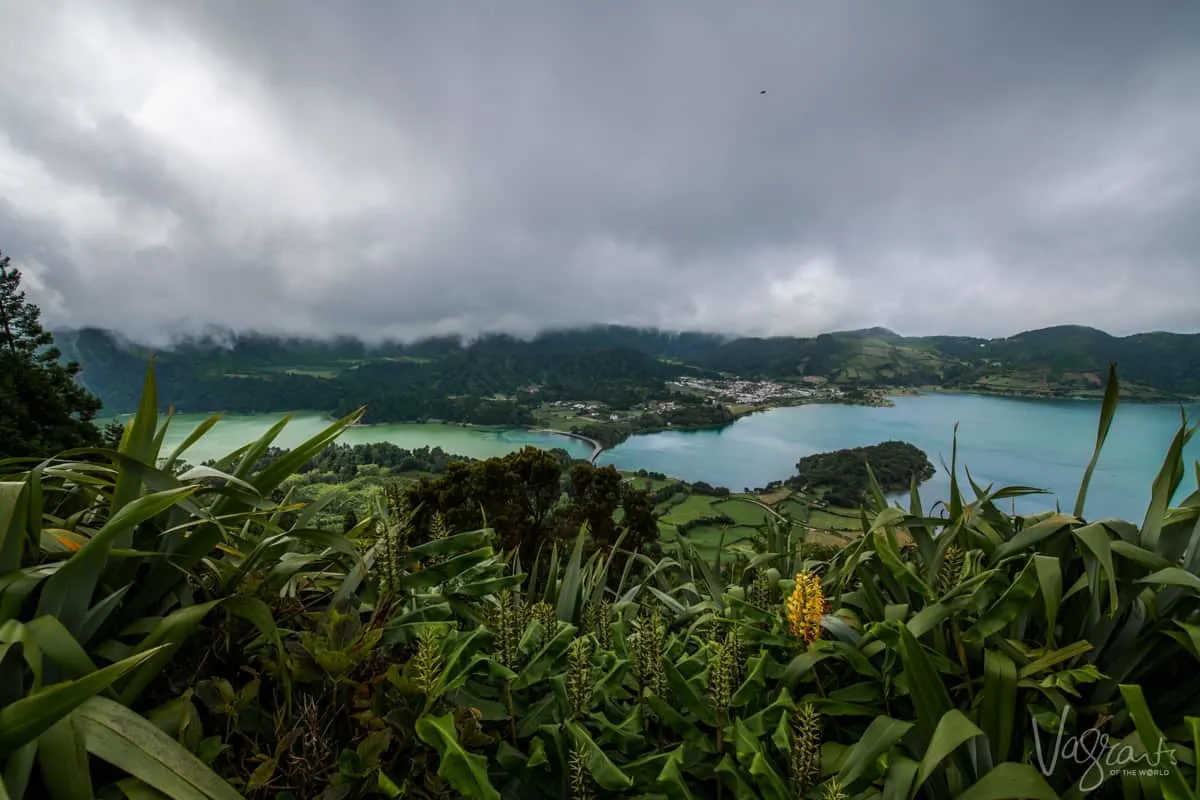
The verdant islands are blessed with stunning natural features such as volcanoes, vibrant blue and green lakes, black beaches, natural thermal pools and pristine, rugged coastline. Famed for the vibrant display of hydrangeas that line the roads each year in summer, the Azores is also renowned for its local produce, such as beef and various cheeses produced on the different islands. There is an endless choice of acclaimed restaurants and regional dishes in the Azores.
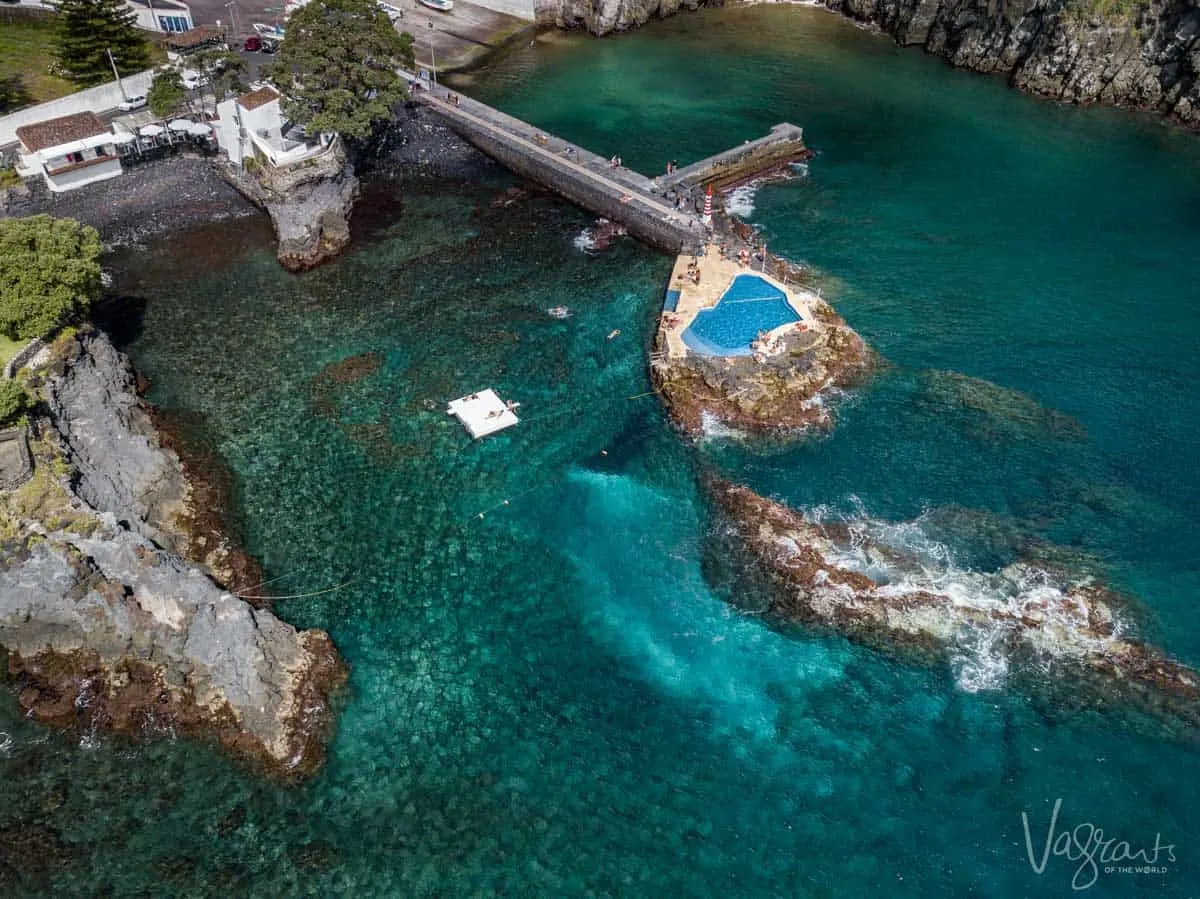
Along with the almost otherworldly natural landscapes, the Azores boasts charming historic towns and cities such as São Miguel’s Ponta Delgada and the capital of Faial Horta, a major seafaring port and historic meeting point for yachts and other vessels crossing the Atlantic.
Óbidos
The approach to Óbidos from the highway will leave you spellbound; the walled city is the stuff of fairytales. A magnificent medieval castle (now a luxury hotel) wraps its walls around a cheery display of red roofs and whitewashed houses framed with colourful flowers. Head through the main gates into the ancient streets to find a vibrant (little) city that is so much more than a tourist attraction.
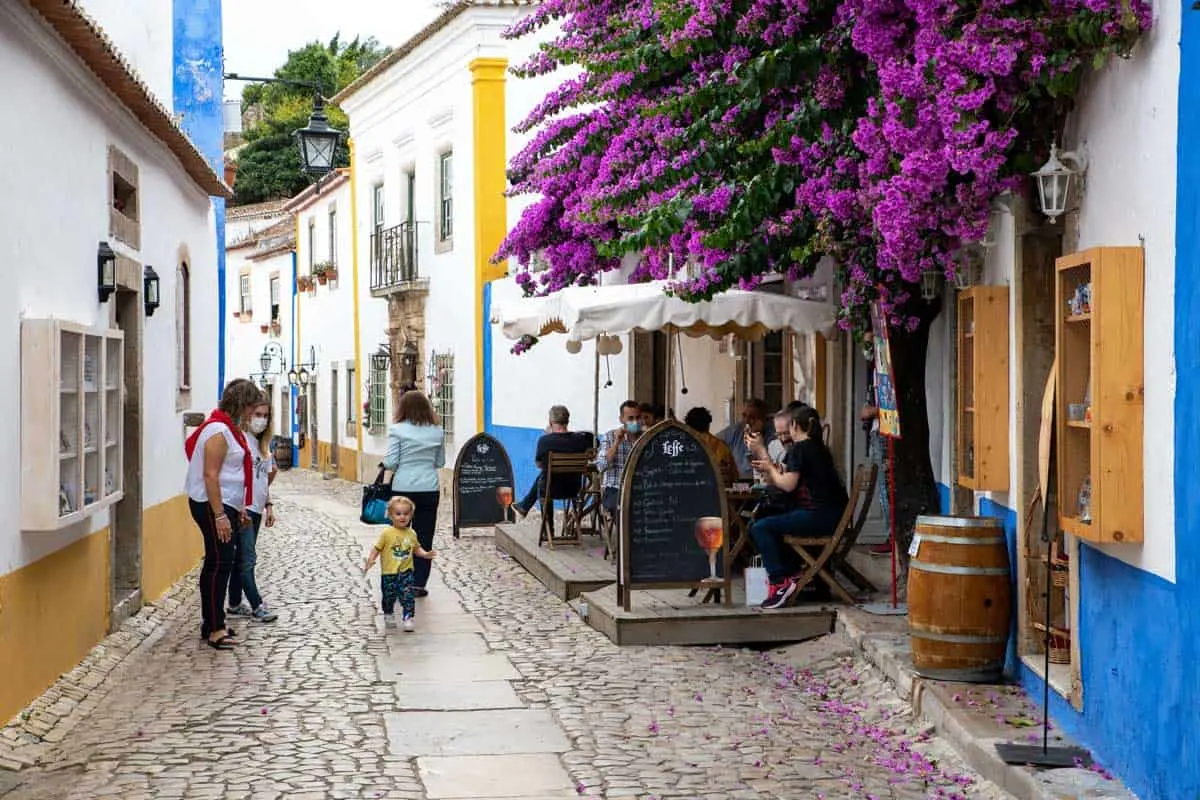
Óbidos dates back to the 700s to the fall of the Roman Empire and the Moors. But it was around the 13th century, the tradition of Kings gifting the city of Óbidos to his future queen began. And what a gift Óbidos is.
Now dubbed the literary town of Portugal, Óbidos has a fabulous array of unique book shops, including The Literary Man Hotel, with the most extensive hotel collection of books in the world – over 65,000 secondhand and rare vintage books all for sale or just a read.
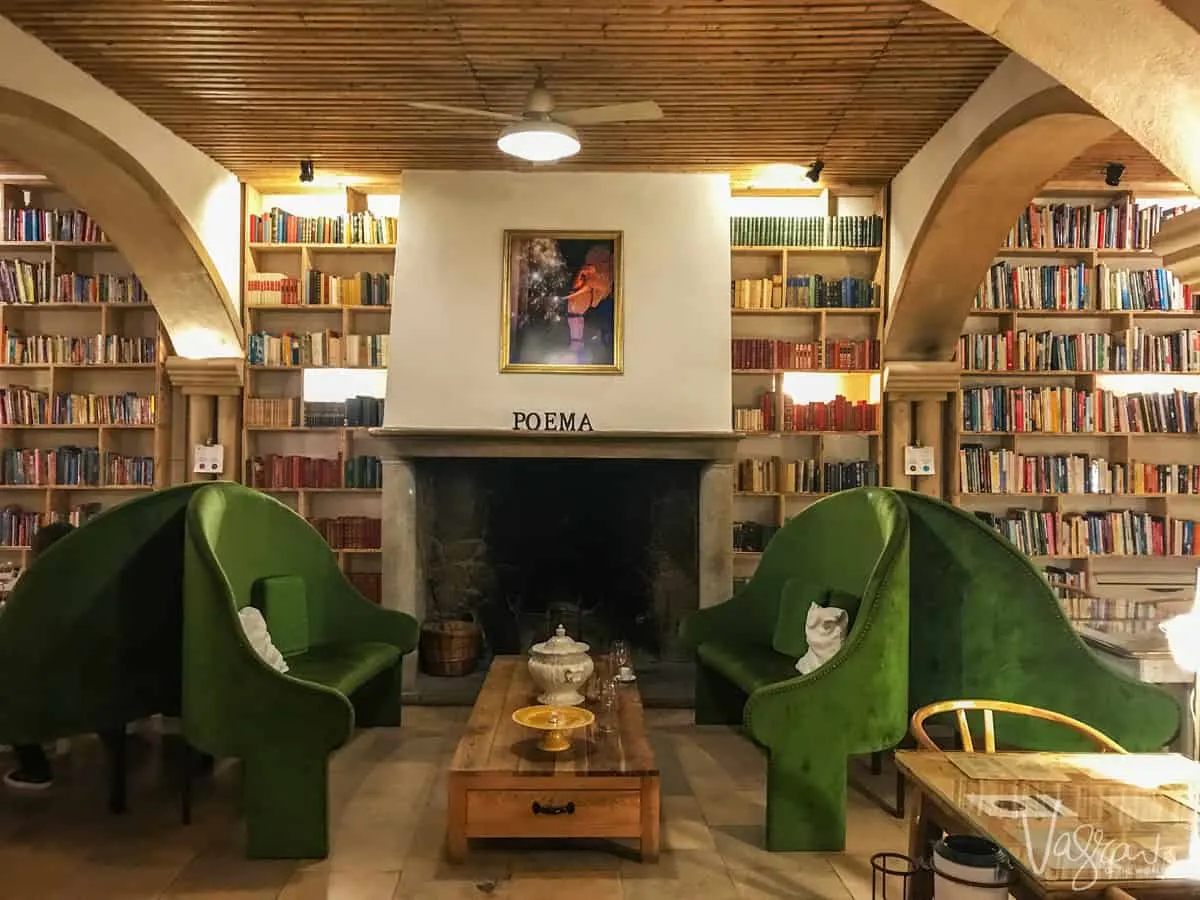
Stay at the gorgeous historic hotel, book a dinner in the 16th-century convent library, or pop in for a drink and a good book in front of the massive fireplace.
See rates and availability for the Literary Man Hotel here or book a dinner reservation.
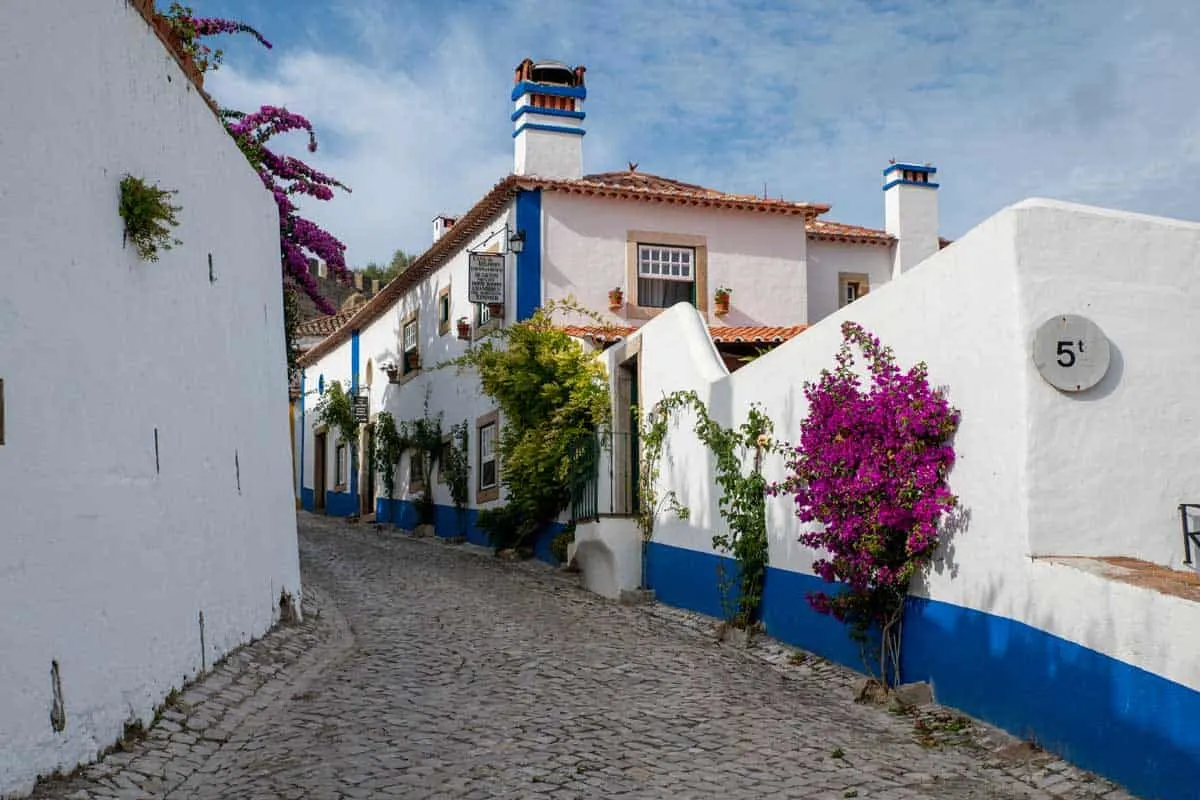
Only 45 minutes from Lisbon, Óbidos is also famous for its annual calendar of events, including its Christmas Market, Medieval Fair and yearly Chocolate Festival.
The Algarve
Summer is a fantastic time to visit southern Europe for its beaches and Portugal’s premier beach destination is the Algarve (we touched on the Algarve’s major cities earlier). The Algarve in southern Portugal has over 150 km of coastline. Divided into two – western and eastern Algarve, the region is a tourist hotspot and one of the most beautiful regions in Portugal with immense history and natural attractions.
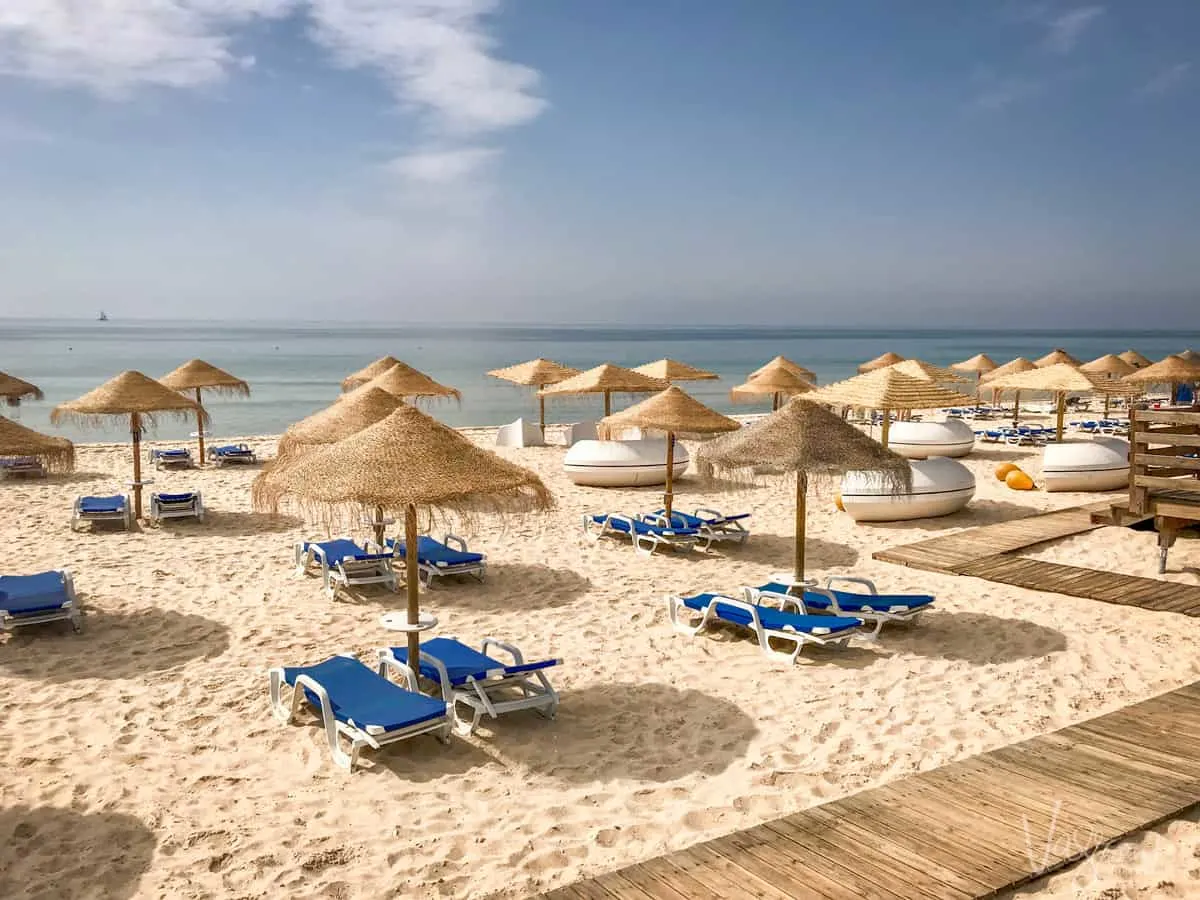
From the mountain region of Monchique to the Ria Formosa Nature Reserve, voted one of the 7 Natural Wonders of Portugal, you will find an incredible diversity of wildlife and landscapes. There is also no shortage of stunning beaches and unique coastal landscapes. From the sea caves around Lagos to the tranquil barrier islands that trace the Ria Formosa through the eastern Algarve municipalities of Loulé, Faro, Olhão, Tavira and Vila Real de Santo António. No matter your interest, there are plenty of incredible places to stay in the Algarve.
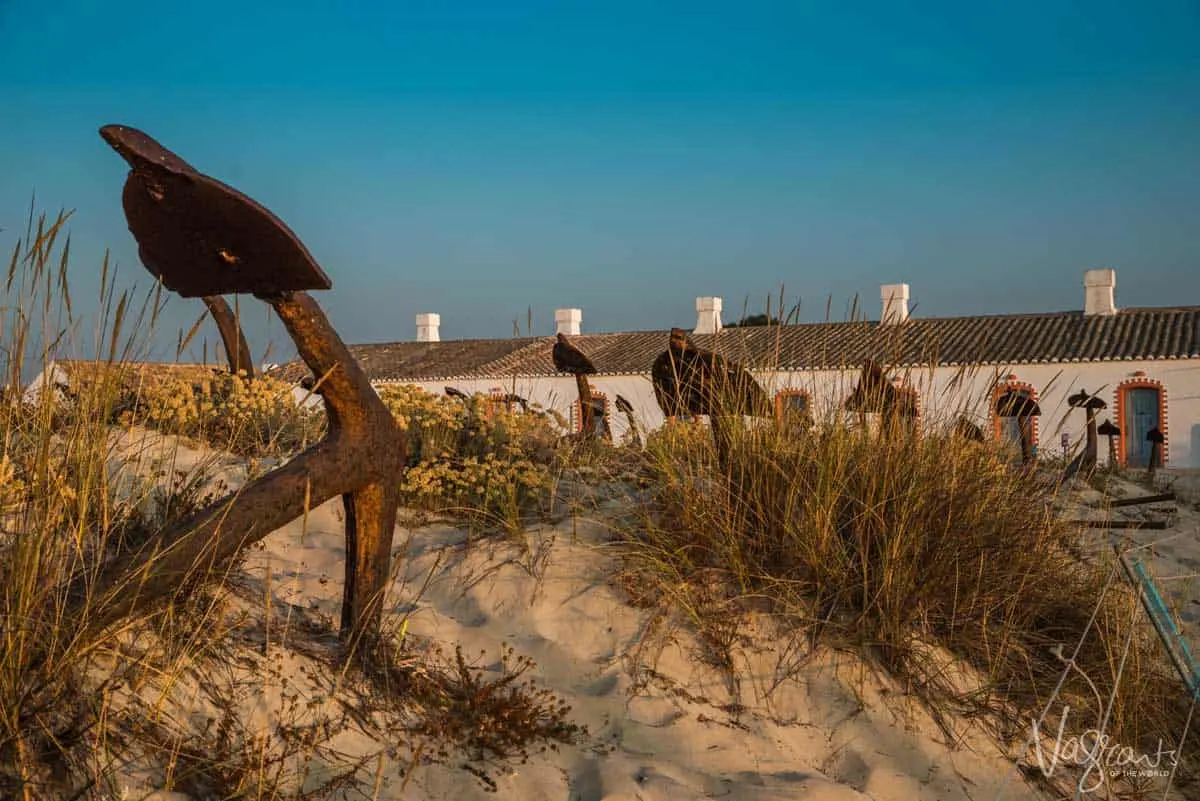
Visit traditional fishing villages and enjoy the region’s famous seafood gastronomy or lazy days on the many organised beaches. The Algarve has so much to offer every type of traveller from hikers to bird watchers to those looking for a beach holiday escape.
Aveiro and Costa Nova
The Venice of Portugal, Aveiro sits on a network of lagoons and canals, the Ria de Aveiro Lagoon. Like Venice, Aveiro has a colourful traditional boat – Barcos Moliceiros traditionally used to harvest moliço, a type of seaweed used in fertilizers. Today, the Moliceiro boats mostly ply the marshy lagoons and Vouga River with tourists.
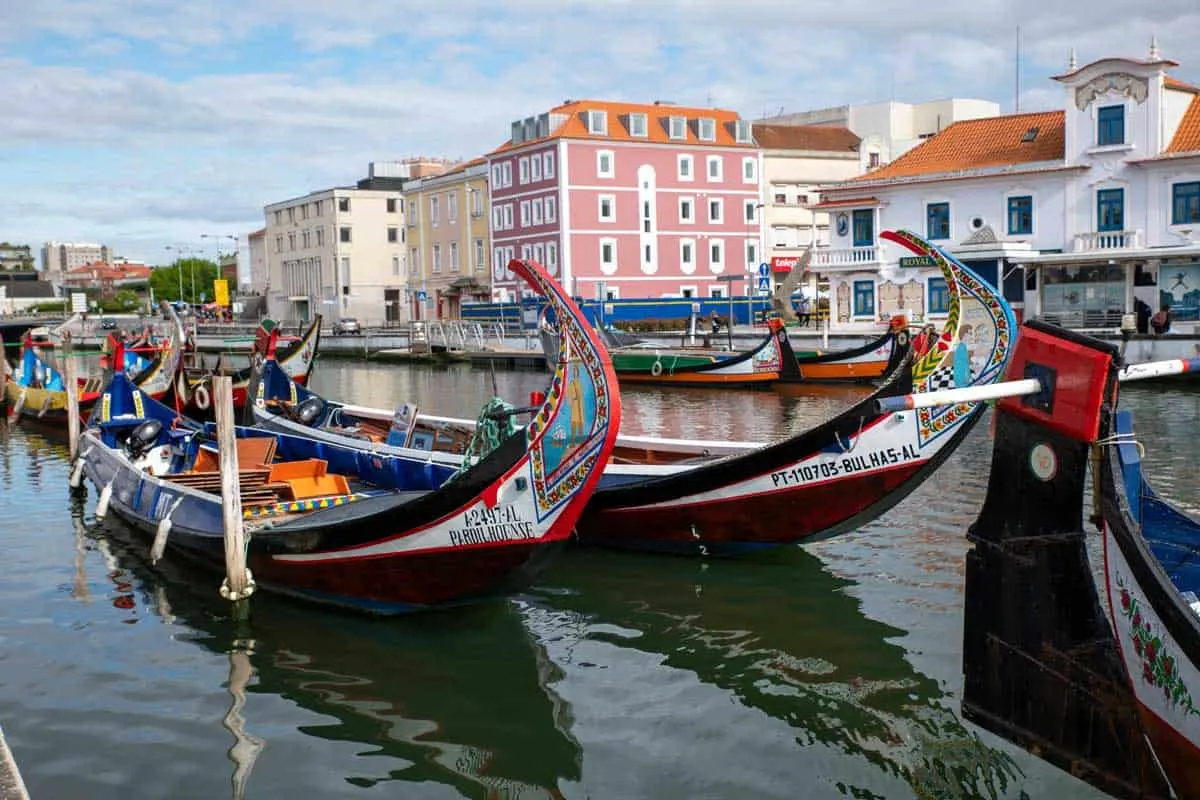
However, it’s not just the colourful display of boats plying the canals that makes Aveiro so beautiful. The city boasts a gorgeous collection of Art Nouveau architecture. If admiring the collection of Art Nouveau houses, shops, and restaurants along the waterfronts isn’t enough, head to the Museu Arte Nova. Aveiro is also the place for the famous Vista Alegre porcelain. Established in 1842, you will find the Vista Alegre museum, the founders palace and retail outlet selling discounted lines.
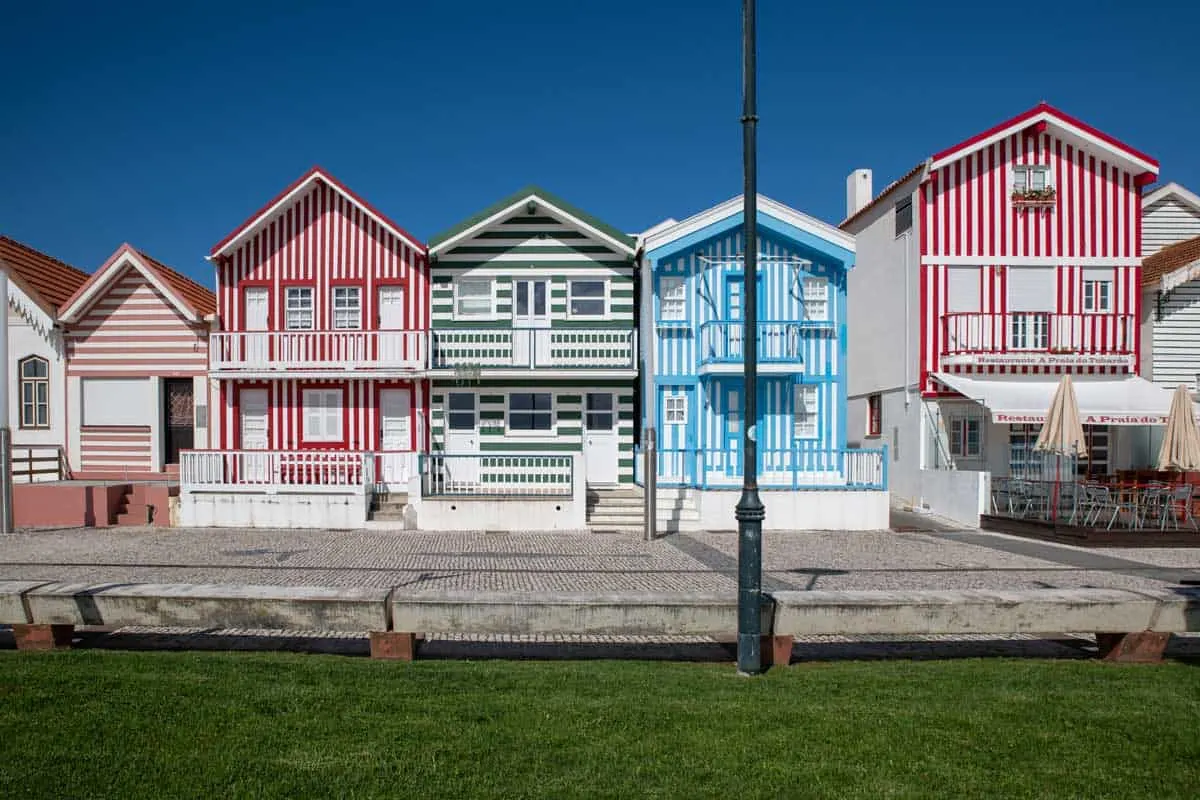
When you have had enough of the historic and scenic city set along the narrow waterways, head to the beach for another colourful display at Costa Nova. Surfers favour the sandy dunes and rugged coast, but Costa Nova is also a feast for the eyes. Brightly painted fishing shacks built to store equipment and nets have transformed into holiday homes over the years, all in keeping with a long-standing tradition of painting vibrant candy stripes on the exterior.
Madeira
Another of Portugal’s autonomous islands, the four island archipelago of Madeira, sits in the Atlantic Ocean between Portugal and Morocco. The archipelago is famous for its natural landscapes, namesake wine, year-round temperate climate, and fascinating traditions. Madeira has won the Best Island Destination in the world six years in a row and Best Island Destination in Europe seven times in eight years. It’s the perfect summer getaway and one of Europe’s best winter sun destinations.
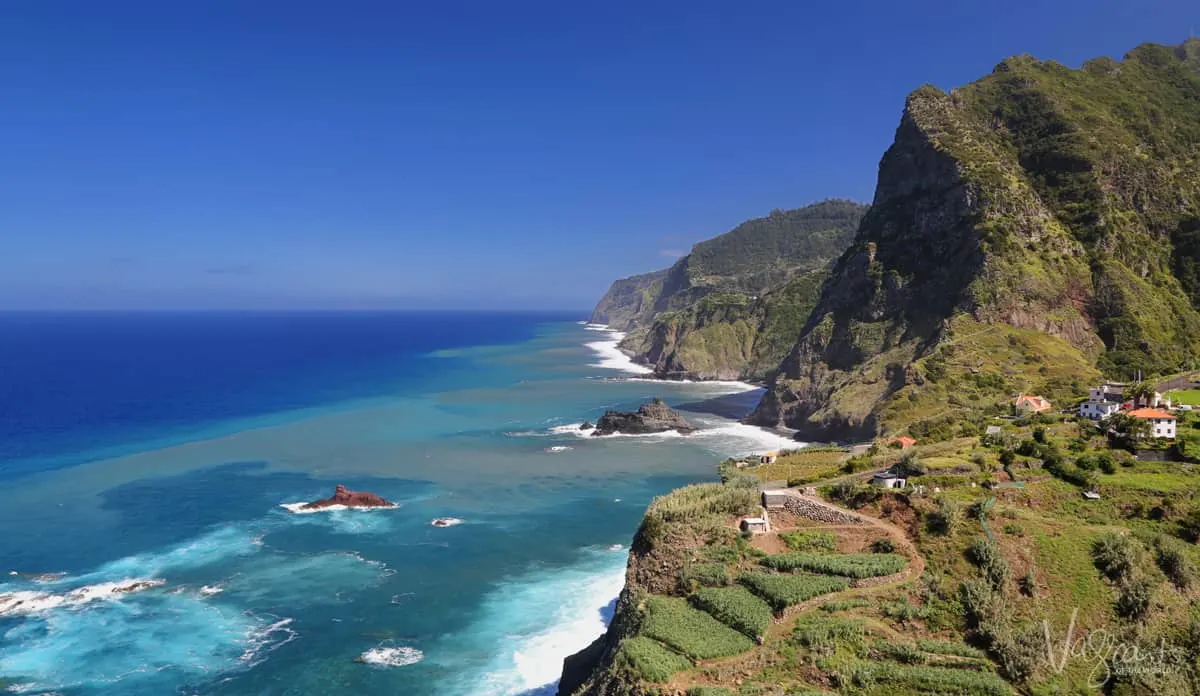
Nicknamed the “Floating Garden”, Madeira charms its visitors with lush forested landscapes, stunning beaches set against dramatic clifftops, natural pools carved out of lava rock and charming towns.
Madeira is also a hikers paradise with unique hiking trails following the traditional stone irrigation channels called Levadas. People say, “Madeira should be discovered slowly, one Levada at a time.”
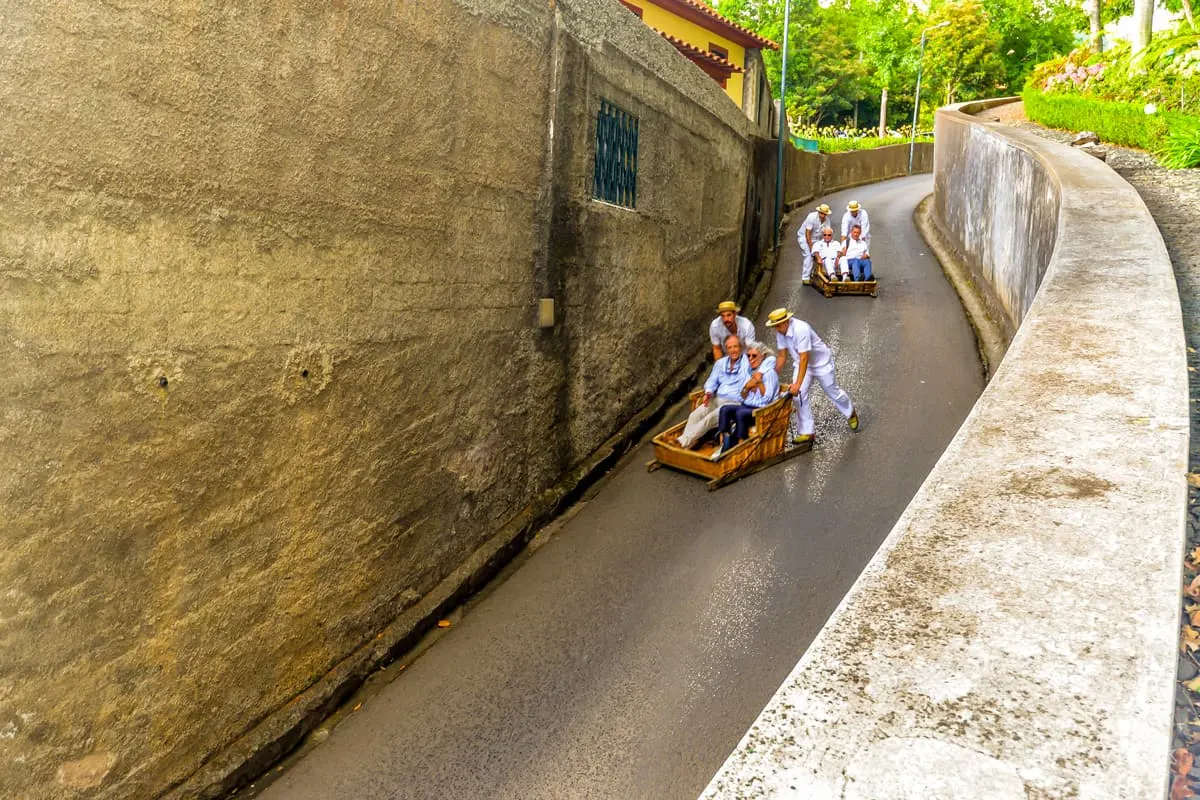
Head to Funchal, the capital of the largest island Madeira over New Year, for the largest fireworks spectacular anywhere in the world. For one of the more unusual things to do in Madeira, take a two-kilometre hair-raising wicker toboggan ride down the hill from the upper terminal in Monte. A tradition dating back to the 1800s and a genuinely Madeiran experience.
Viana do Castelo
Famous for its majestic views over the Lima river, Viana do Castelo is considered one of the most beautiful cities in the north of Portugal.
A popular stop along the Caminho Português (Portugues Way), the city’s geographical location on the Atlantic Ocean and the mouth of the Lima account for the city’s beauty and history. Viana do Castelo was an important city during the Portuguese Age of Discoveries and has a deeply traditional connection to the sea through cod fishing.
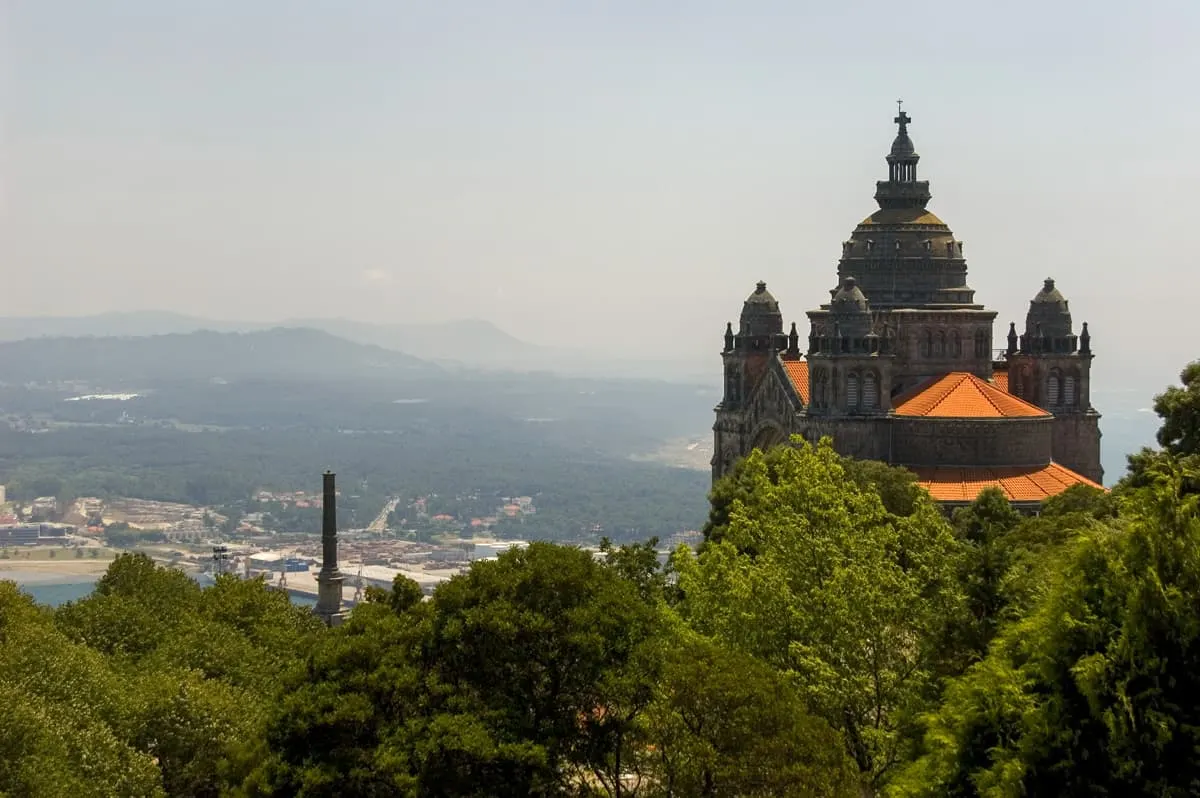
In addition to being known for traditional filigree goldwork, maritime and shipbuilding traditions, Viana is considered a “Mecca of Architecture”. Rich with palaces, churches, monasteries, and monumental fountains. The tourism office provides self-guided walking routes inspired by Manueline, Renaissance, Baroque, Art Deco, or tile architecture.
However, the cities crowning glory is the Basilica of Santa Luzia, which sits high on the hill over the city. One of the most important pilgrimage sites in Portugal, the Basilica, was modelled on the Sacre Coeur in Paris.
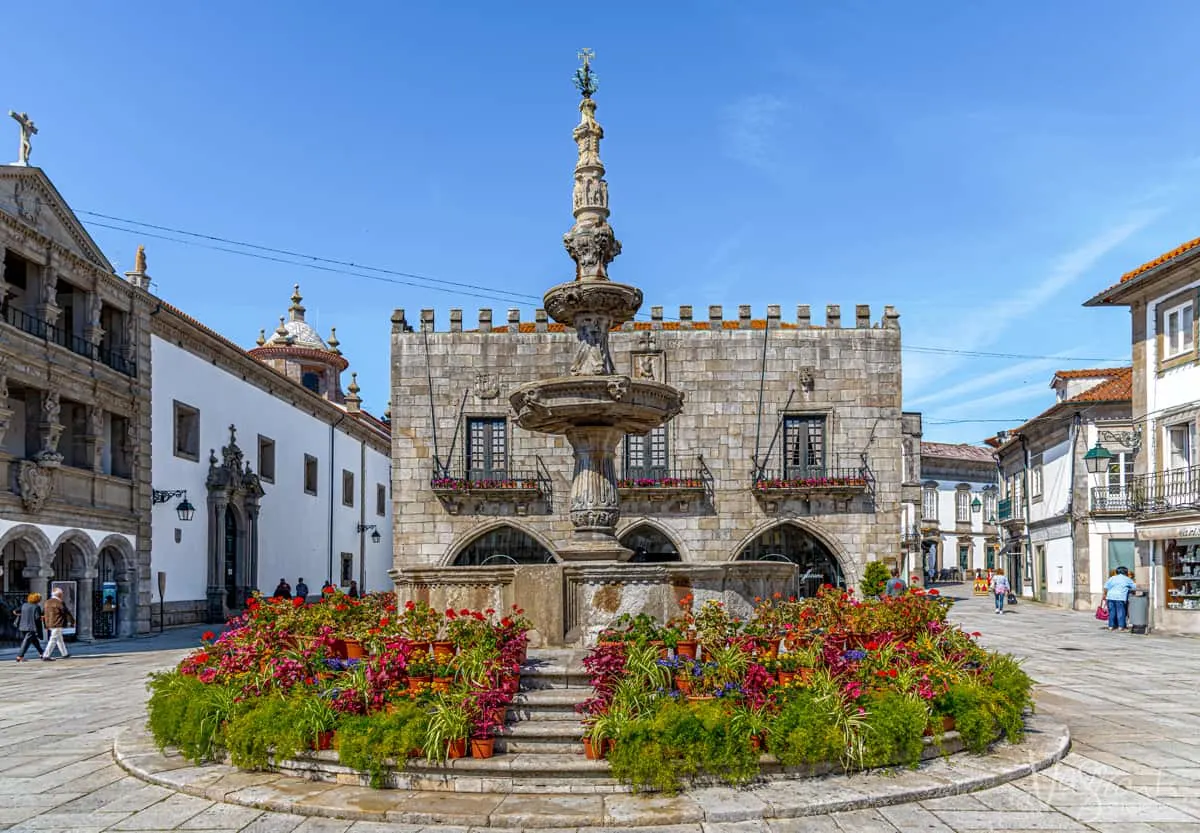
Head to Viana do Castelo in late August for one of the most colourful festivals in Portugal – the Romaria de Nossa Senhora d’Agonia. In a three-day festival, the figure of Nossa Senhora da Agonia, the patron saint of fishermen, is paraded through the streets in a loud and lively procession to bless the sea.
Alentejo
The Alentejo region in south-central Portugal covers a third of Portgual yet is one of the least populated regions. In the Alentejo, you will find some of Portugals most beautiful countryside and celebrated heritage.
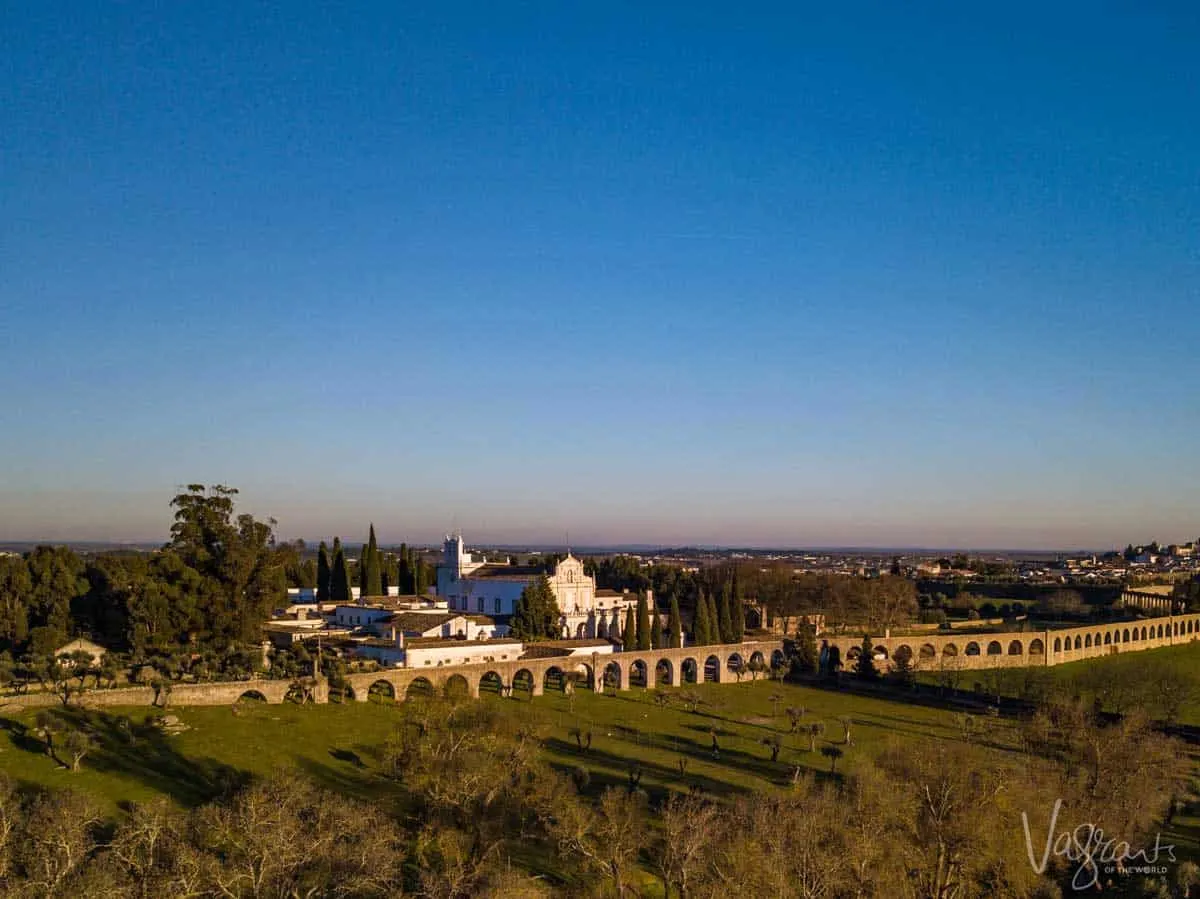
A diverse landscape where picturesque olive groves and cork plantations blend into vineyards in the central region, reaching vast stretches of pristine beaches on the Alentejo coast. Kilometres of ancient aqueducts weave through the flourishing countryside, and whitewashed villages spill from medieval castles perched precariously on hilltops.
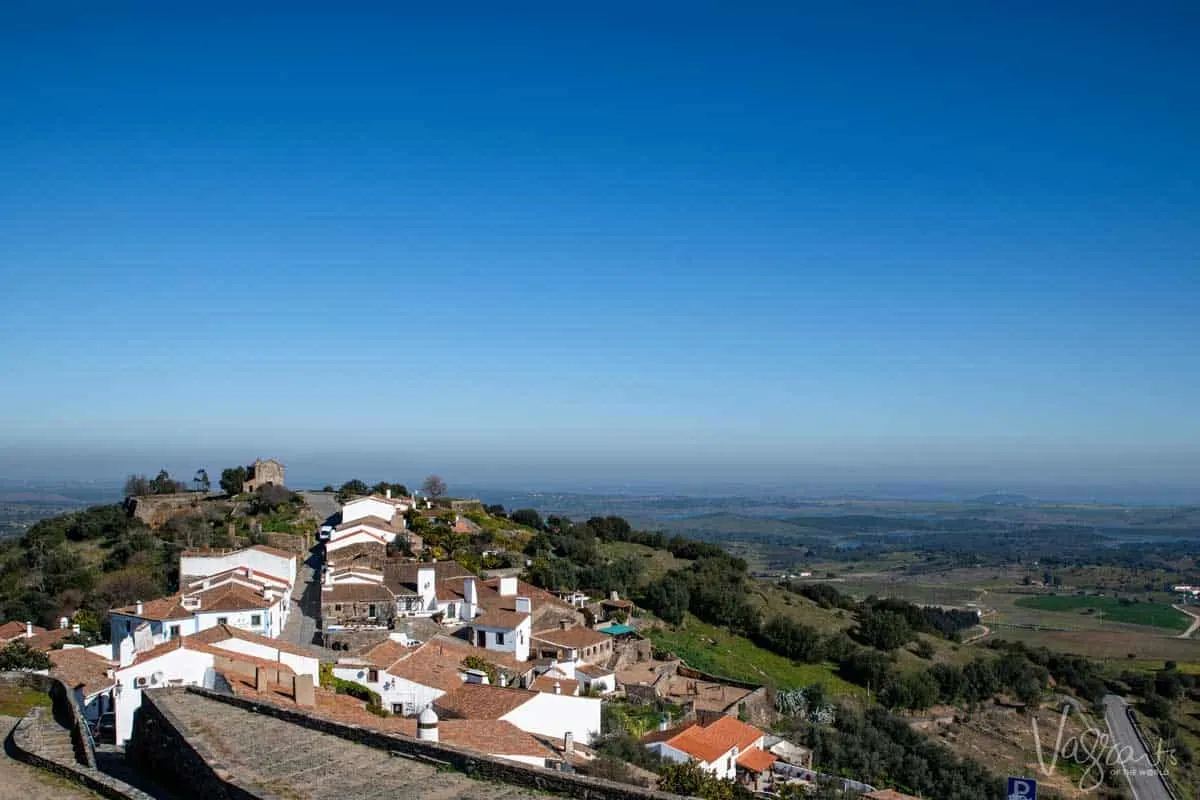
Not just celebrated for its beautiful landscapes, historic towns and cities, the Alentejo region is where you will find some of the country’s most delicious gastronomy and world-renown wines. Travelling from village to village, you can experience micro-regional specialities from the famed Alentejo Porco Preto to the unique Nisa cheese. We think, without a doubt, the Alentejo is one of the best places to visit in Portugal for those who like nature, culture and local cuisine.
Alentejo Tour Recommendation
Alentejo Cork Forest Walk with Optional Lunch: Discover the heritage of one of Portugal’s greatest exports – cork. Discover the process behind the sustainable management of cork forests and Alentejo farming, including wine, olives, honey, and the famed Iberian pigs. Finish with a traditional cork stripper’s three-course meal in a local family restaurant. See full tour details here.
Marvão and Monsaraz
Two of the most beautiful fortified hilltop fortified villages in Alentejo are Monsaraz in the central Reguengos de Monsaraz municipality overlooking the Guadiana River and Marvão in the northern Portalegre district.
Monsaraz Tour Tip
Guided Tour from Évora to Monsaraz: If you don’t want to rent a car, you can take a guided four-hour tour from Évora to Monsaraz. Wander the charming streets of the amazing medieval village of Monsaraz where you can enjoy breathtaking views from the hilltop village. En route to Monsaraz, stop at the San Pedro do Corval pottery village to learn about local ceramics. On the return trip, enjoy a wine tasting at a local winery to sample some unique wines from the region. The tour includes a guide, return transportation and winetasting. See full tour details here.
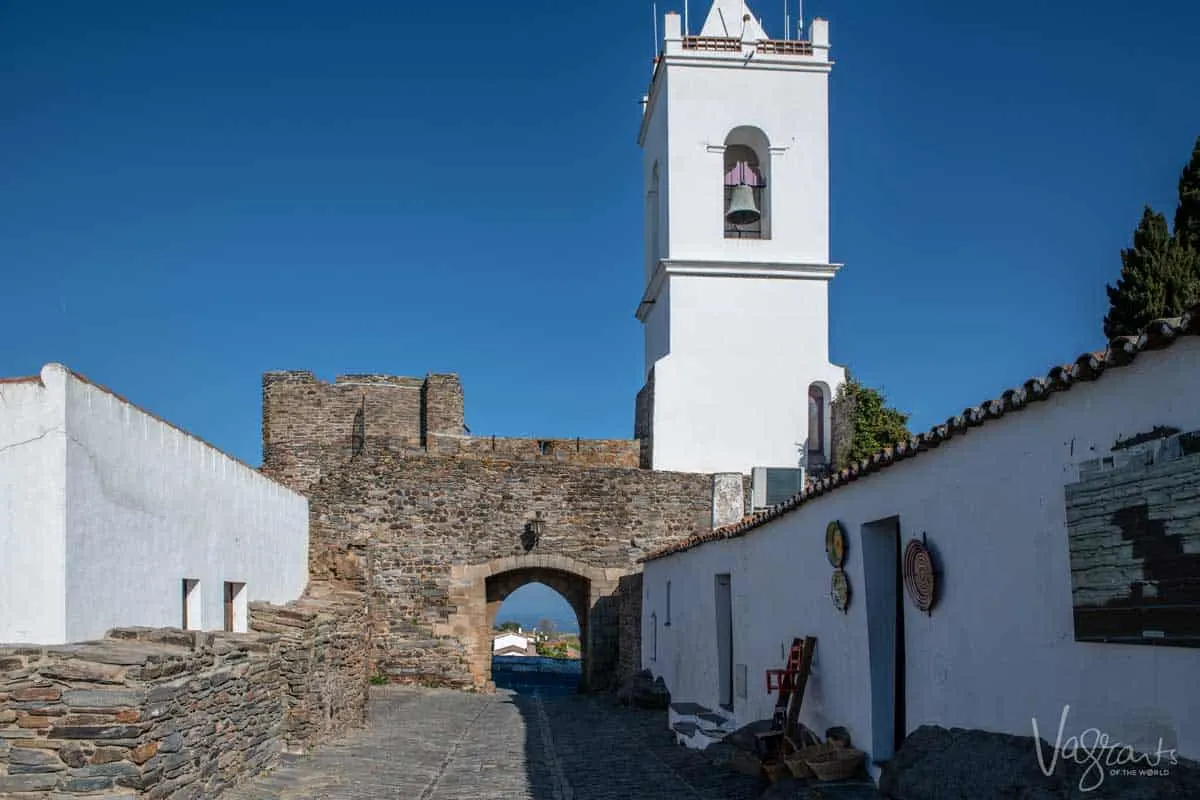
Serra Da Estrella
Head to the highest mountain range in Portugal to the Serra da Estrela Natural Park for magnificent scenery, endless hiking opportunities, and Portugals only ski field.
Covering over 100,000 hectares, Serra da Estrela Natural Park, Portugal’s oldest and largest protected area, is a wonderland for outdoor enthusiasts no matter the season.
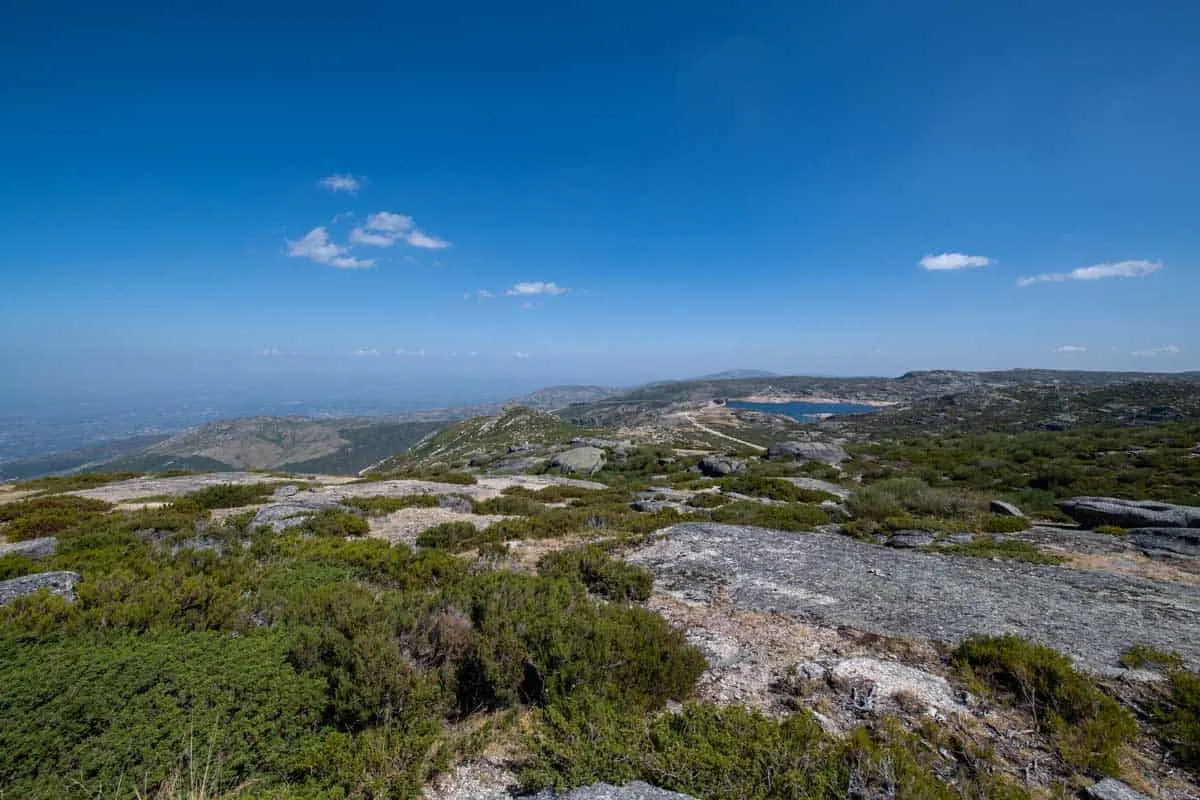
Lush terraced hillsides scattered with charming mountain villages, pristine rivers and waterfalls and magnificent glacial lakes open up endless experiences for visitors.
Head to Torre, the highest point on mainland Portugal at 1,993 metres. An unusual feature of this mountain summit is it is accessible by road. It is also the home to the small ski resort.
In the summer, enjoy the many beautiful, organised Praias Fluviais (river beaches) for a dip or, in winter, take a soak in the many hot springs and thermal spa facilities. There are countless hiking routes, from lush woodland trails passing quaint mountain villages and traditional shepherds huts to hikes across mountainous rock-hewn meadows tracing glacial lakes.
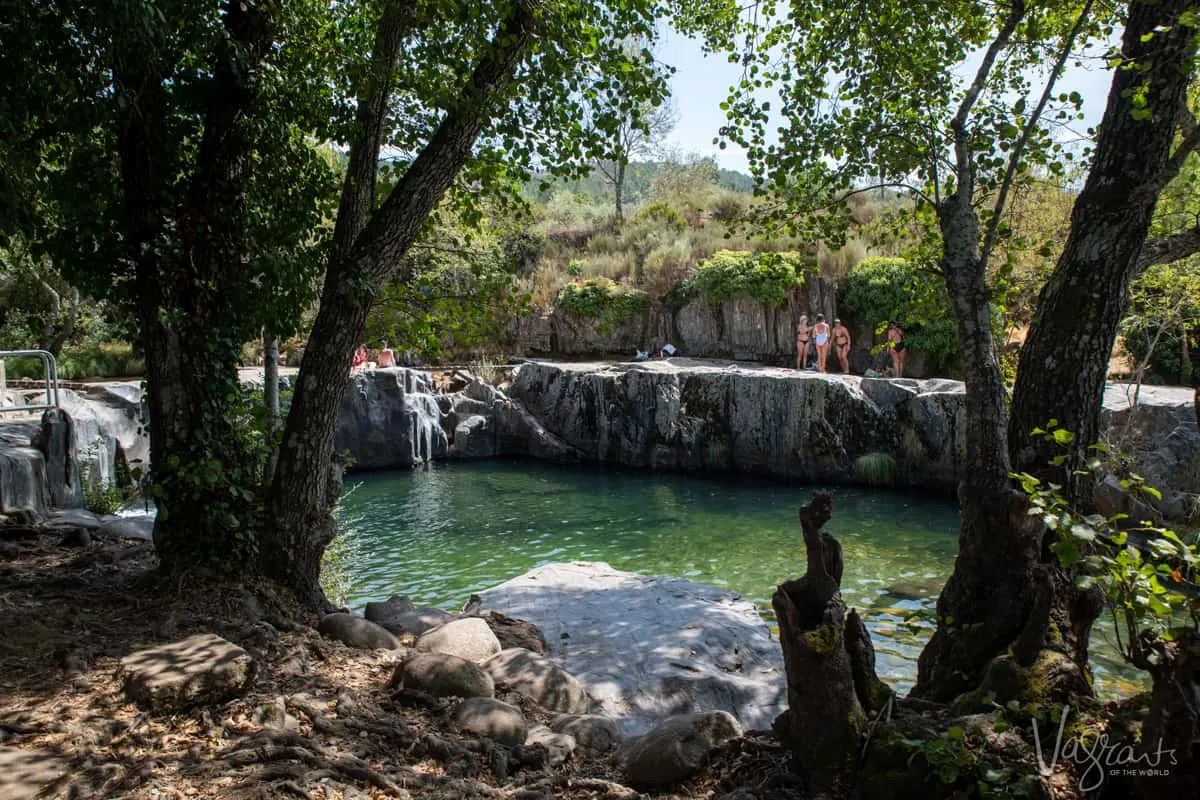
Serra da Estrela also has loads of fascinating historical sites, regional heritage and delicious gastronomy. Try the famous Serra cheese, a soft cheese made from sheep’s milk. Shop for local Burel wool products from the factory door and visit several fascinating museums, including the Museu do Pão bread museum in the small city of Seia.
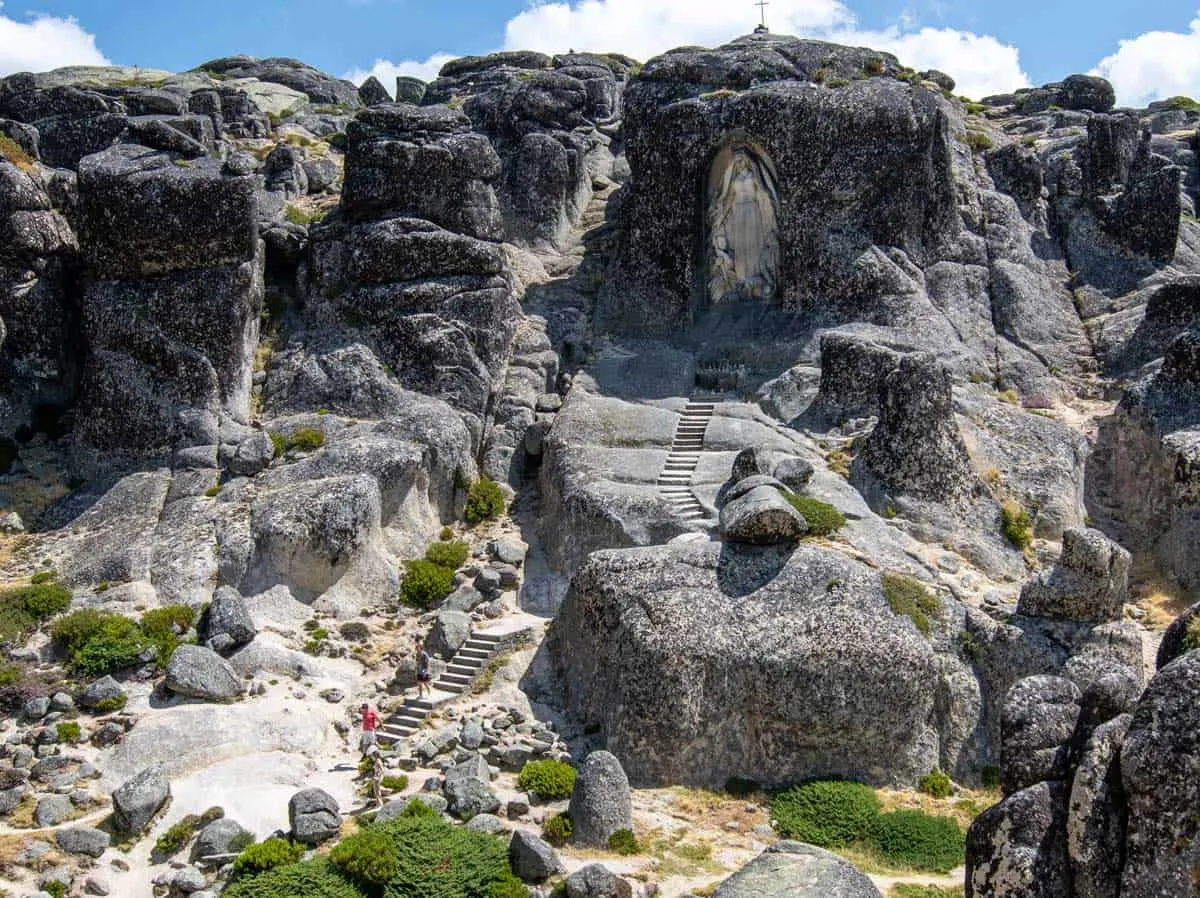
Portugal has so many beautiful places to visit, it would be difficult to list them all but if you have the time, we definitely recommend trying to visit as many as possible. After all, you don’t have to travel far to uncover a lot in Portugal.
